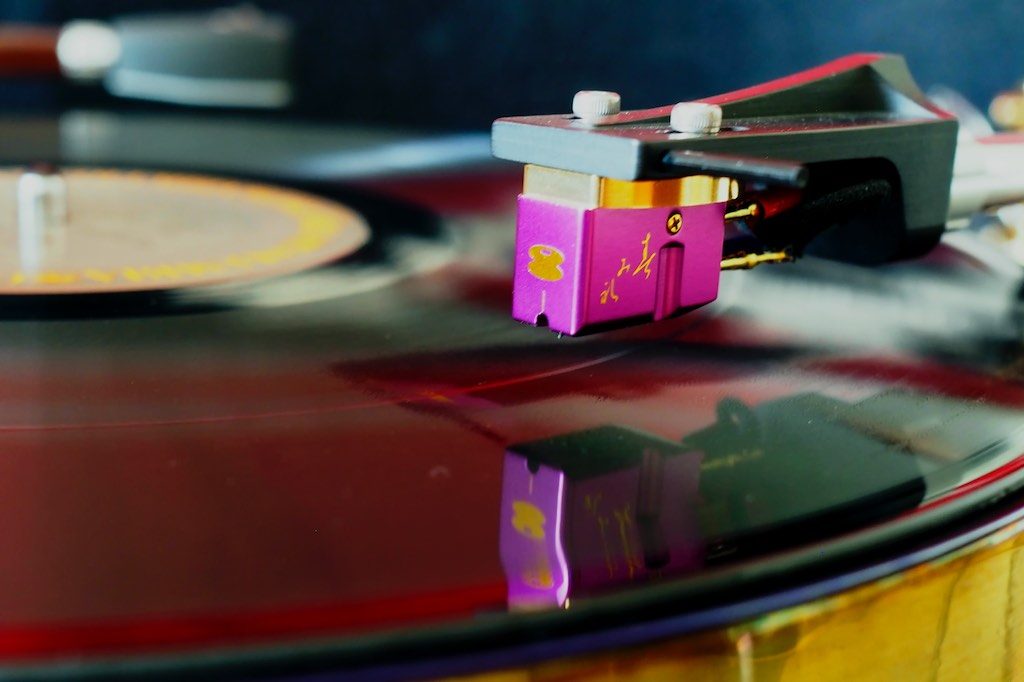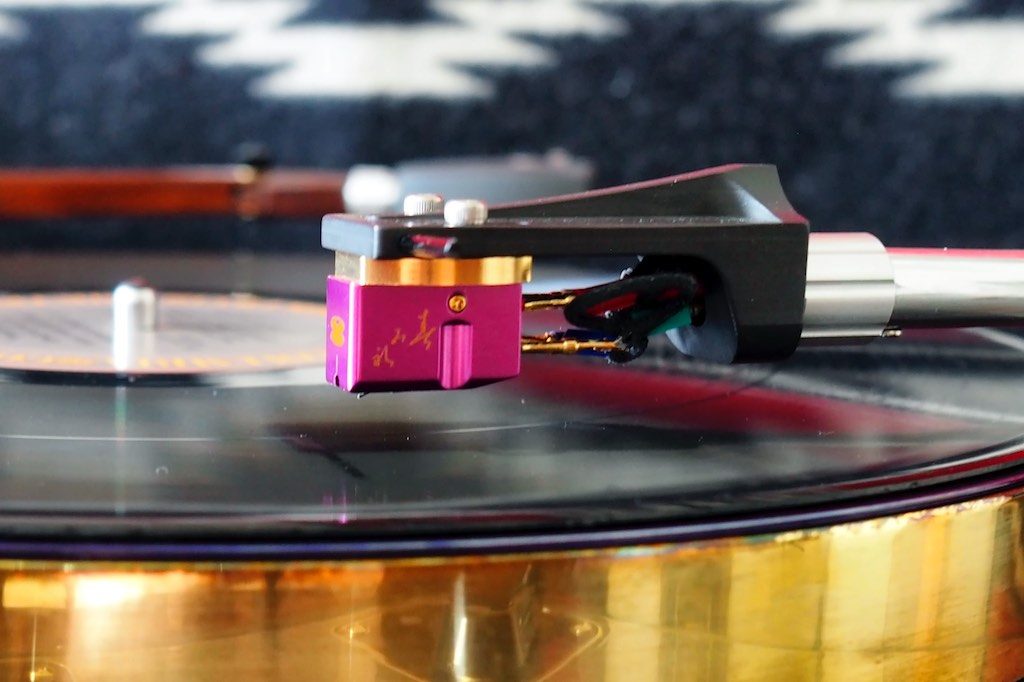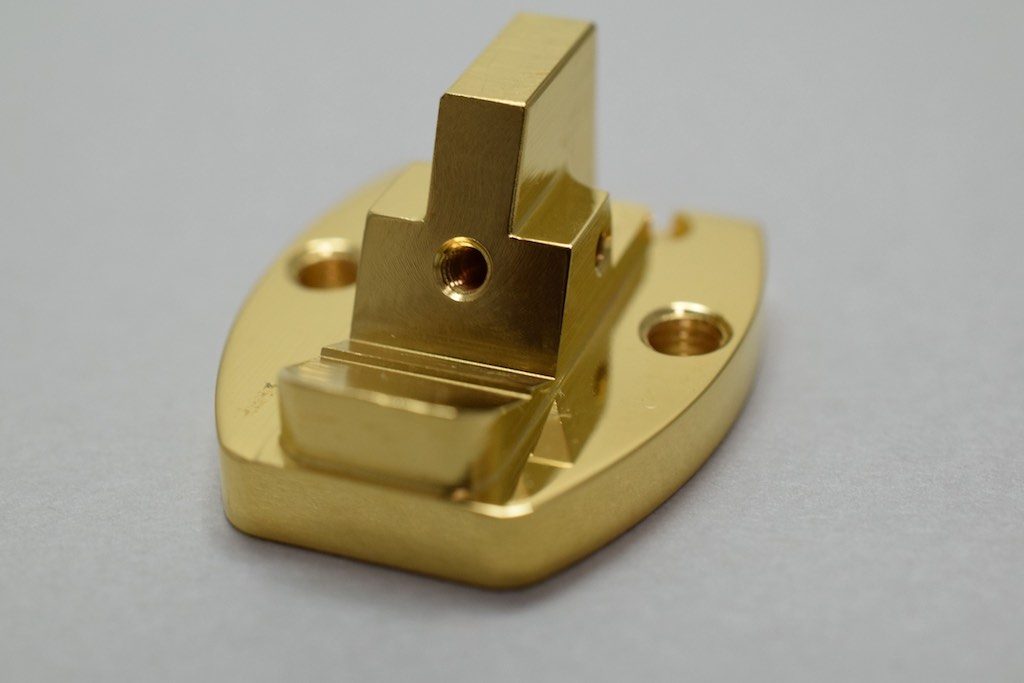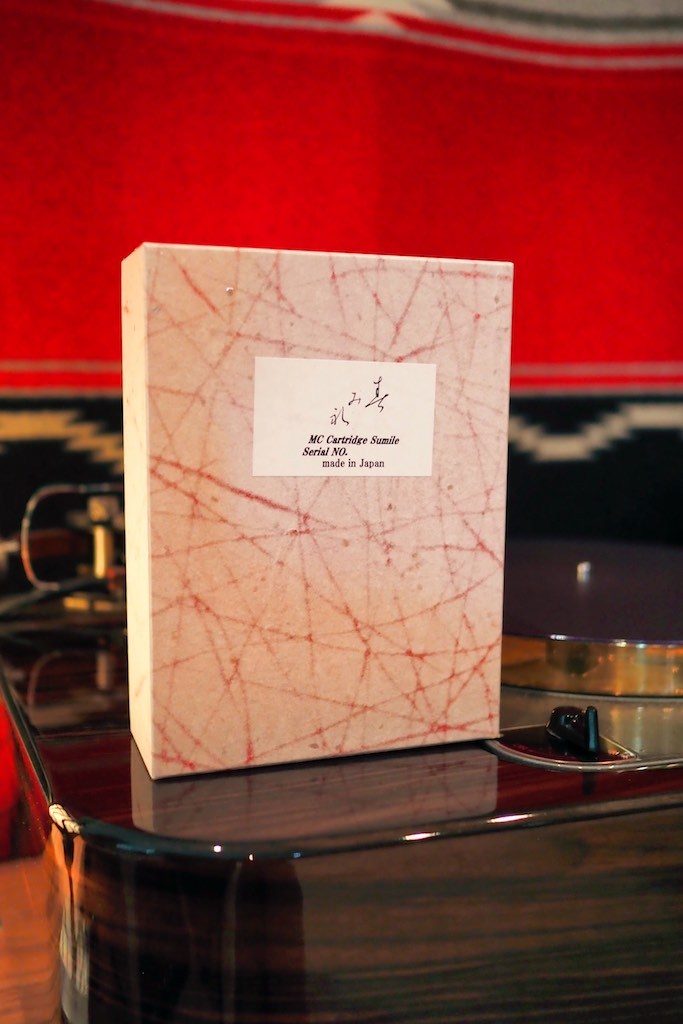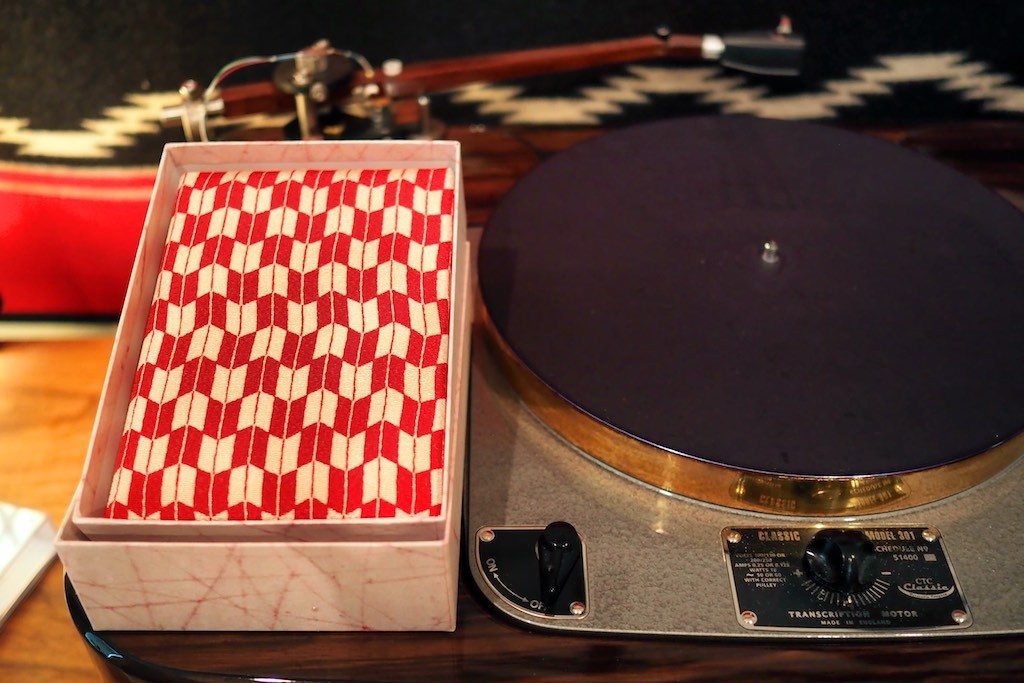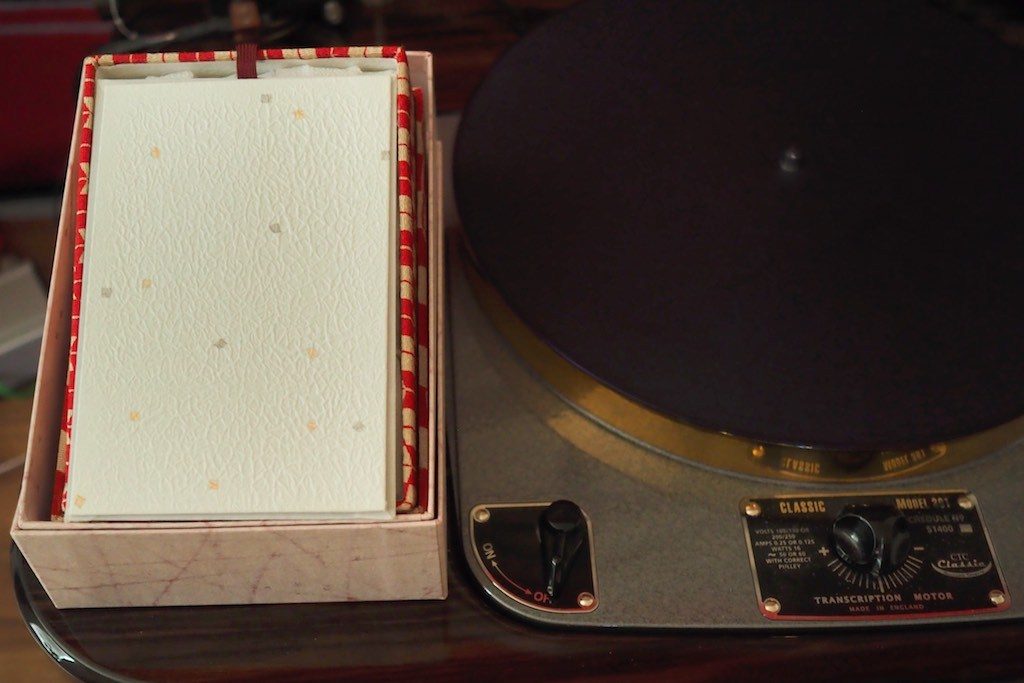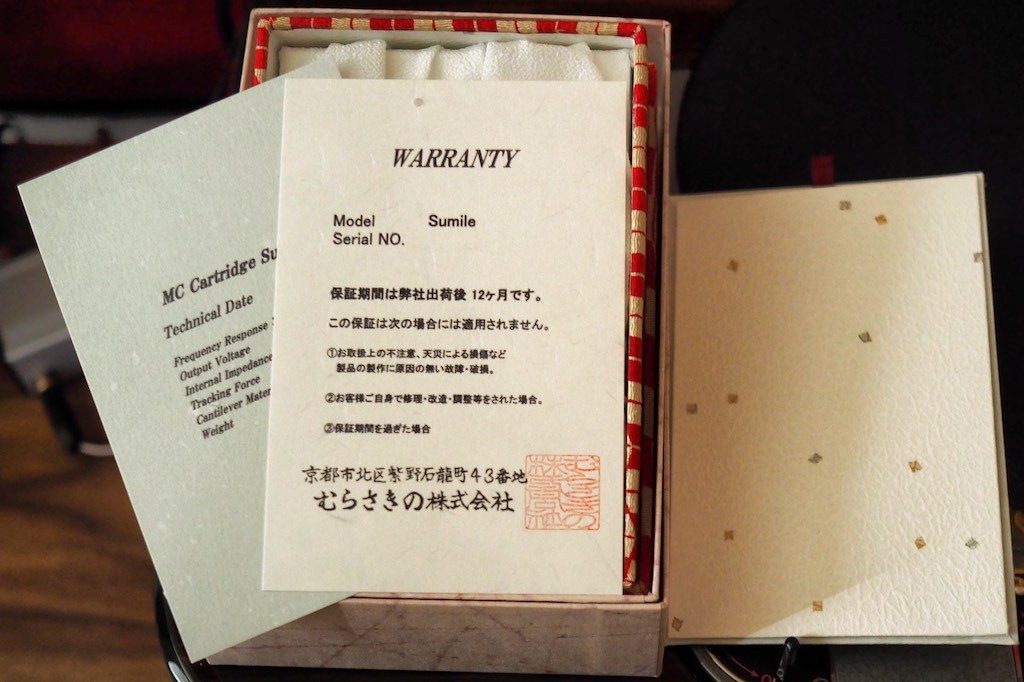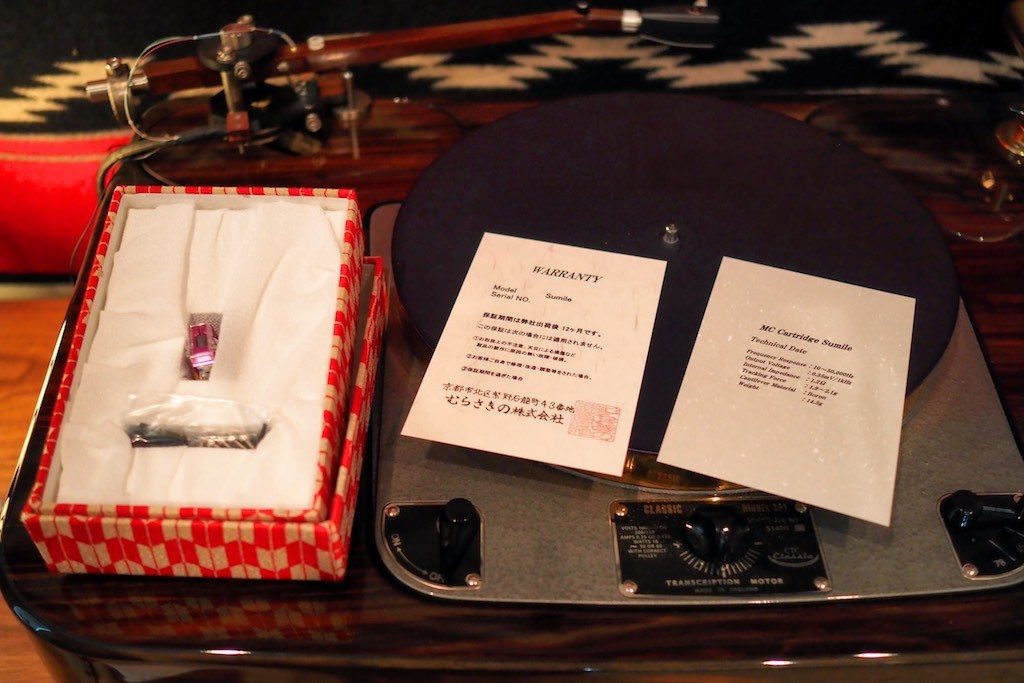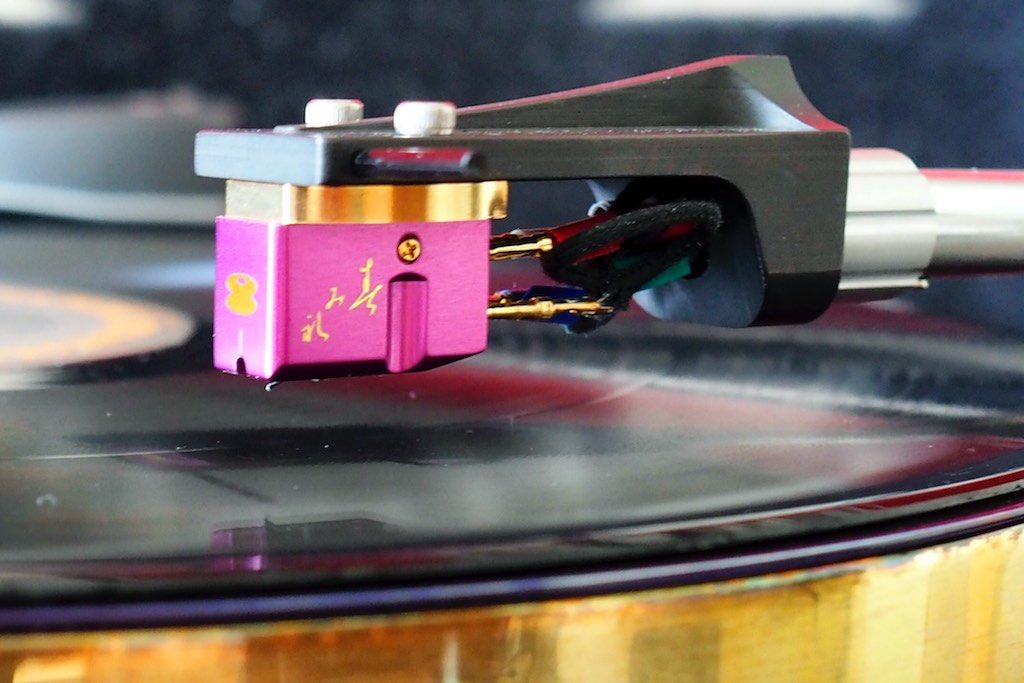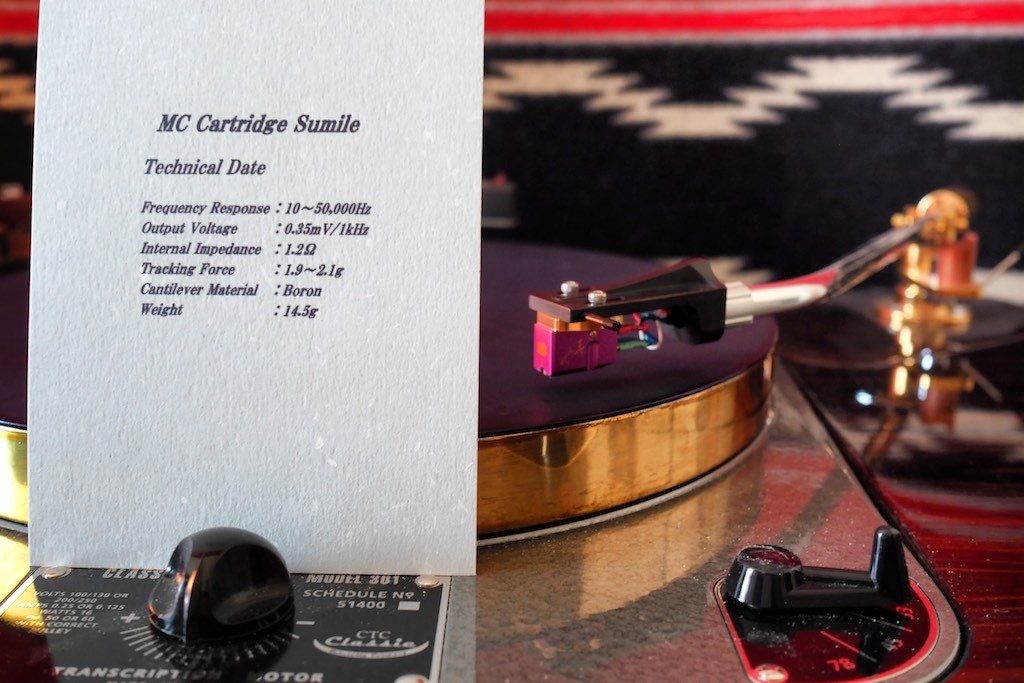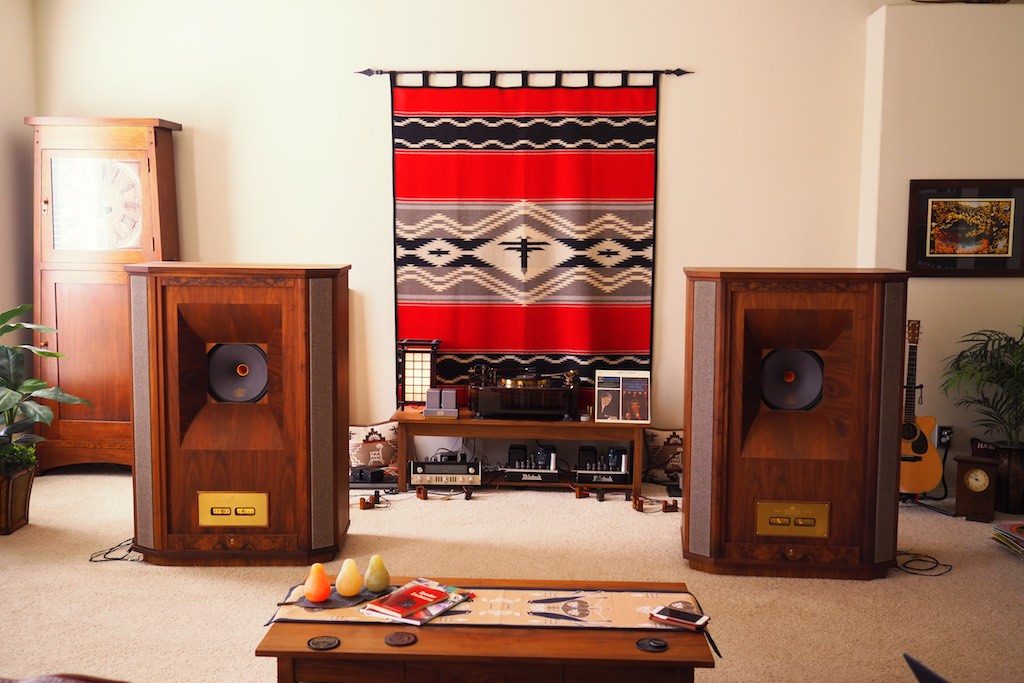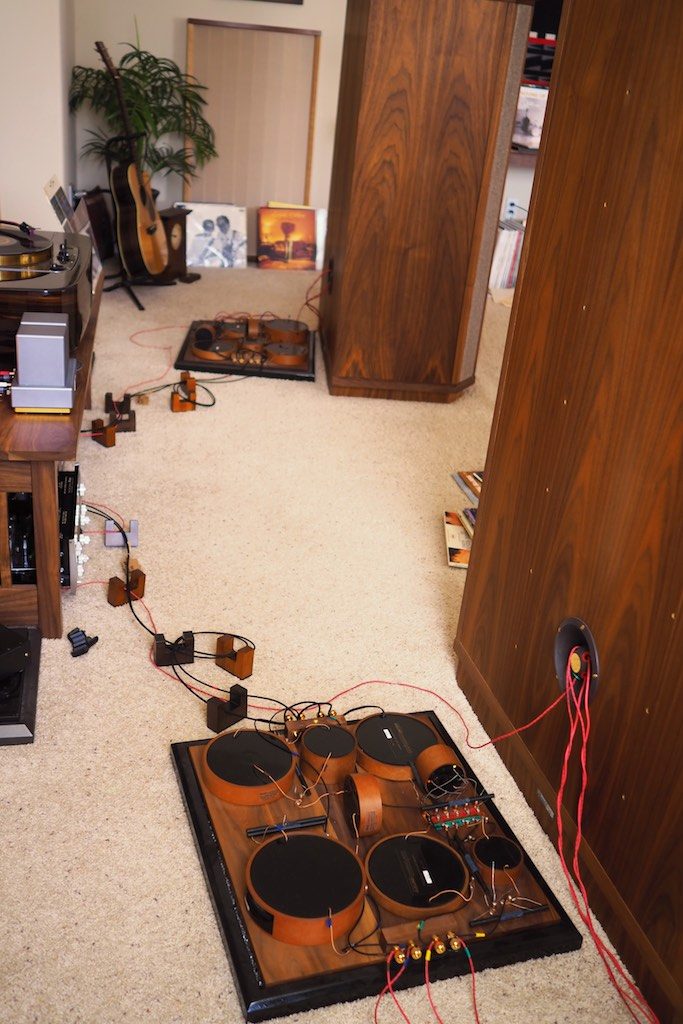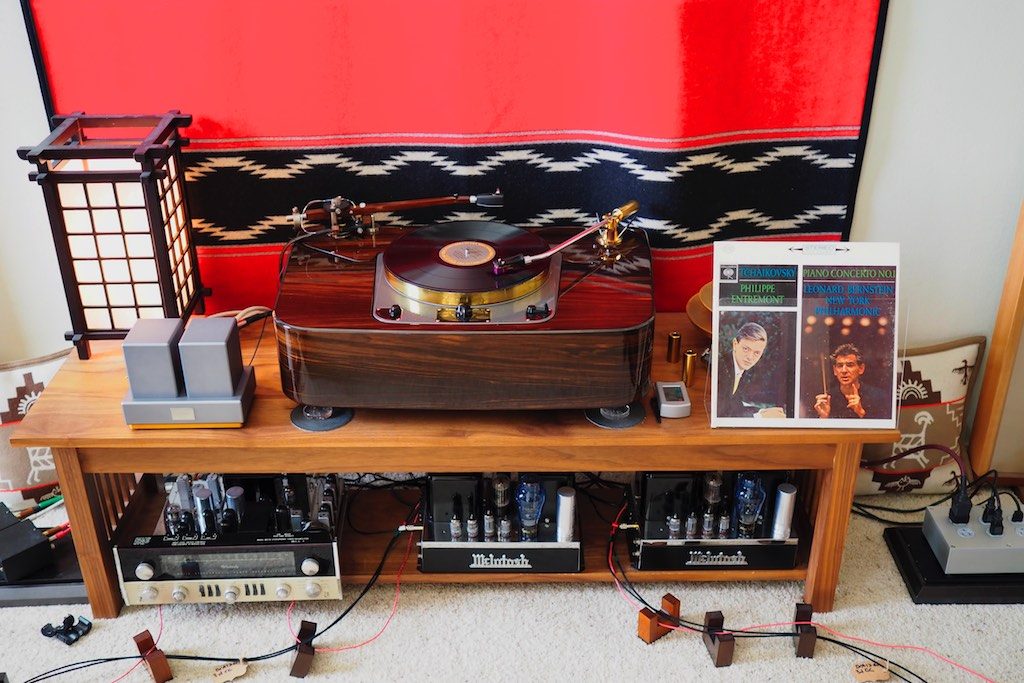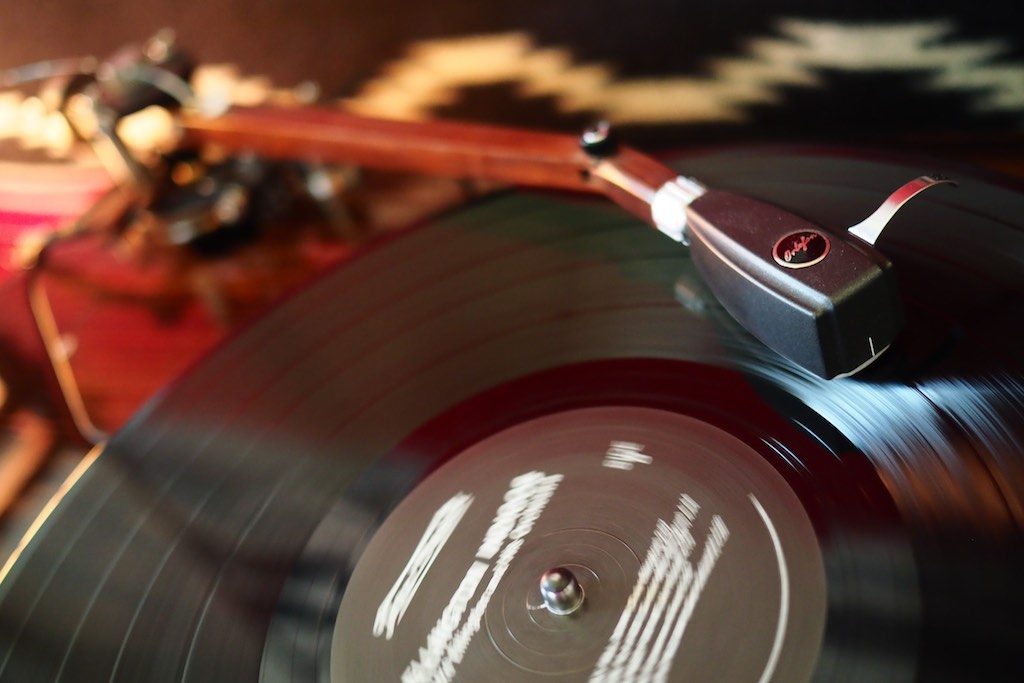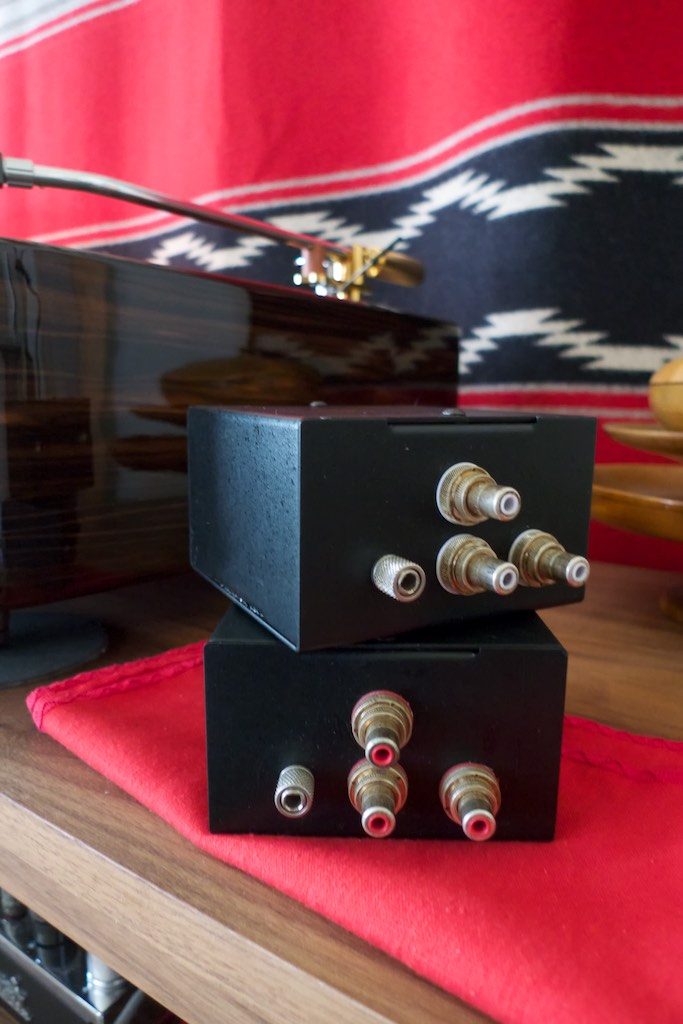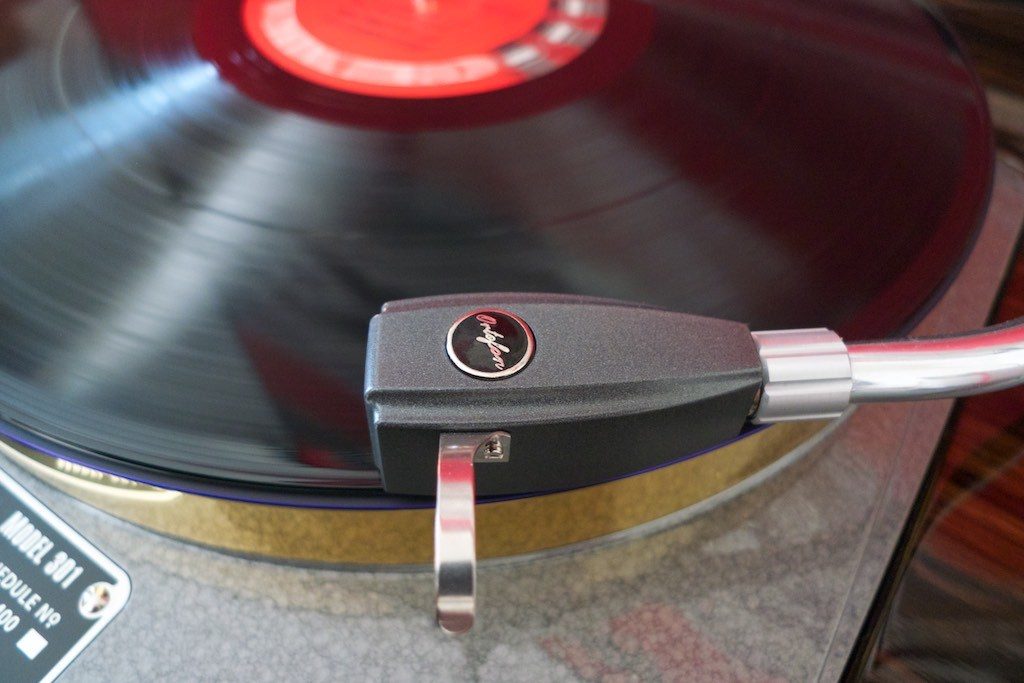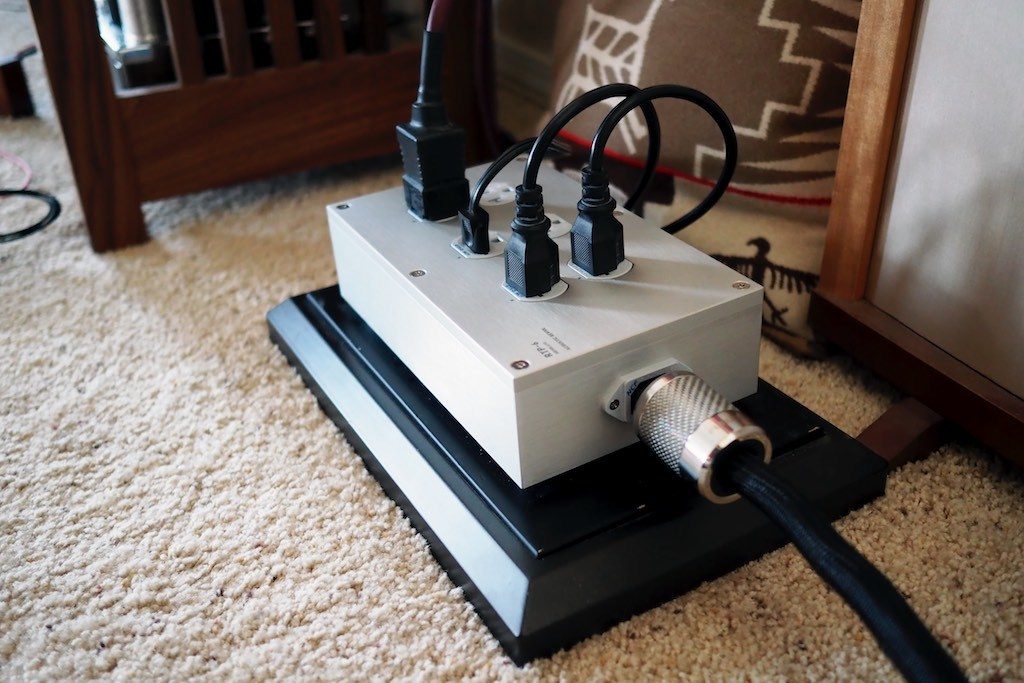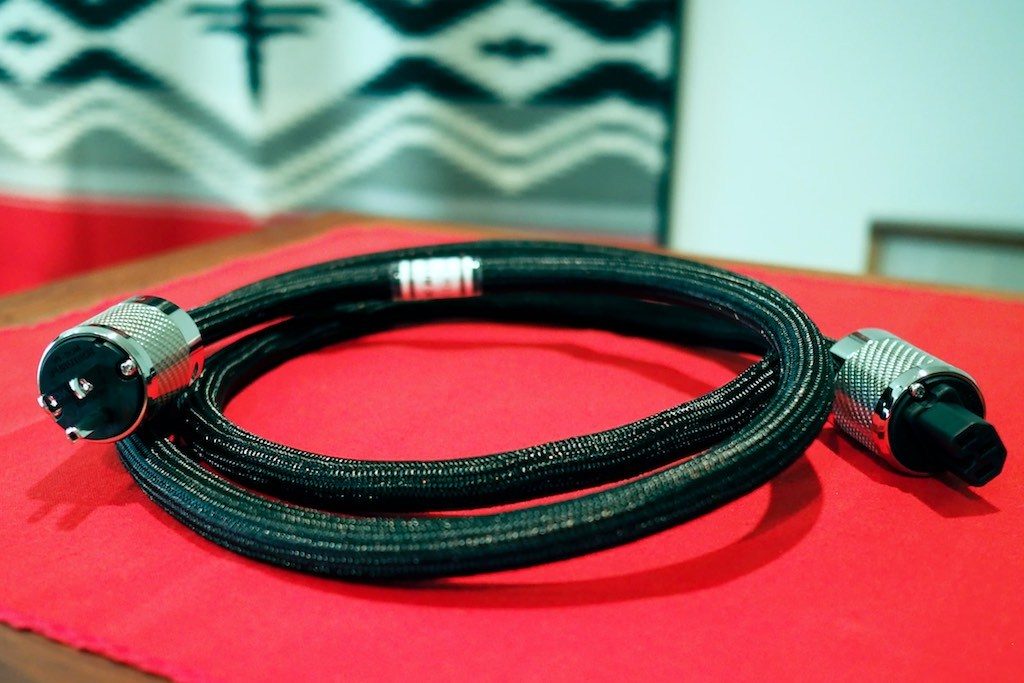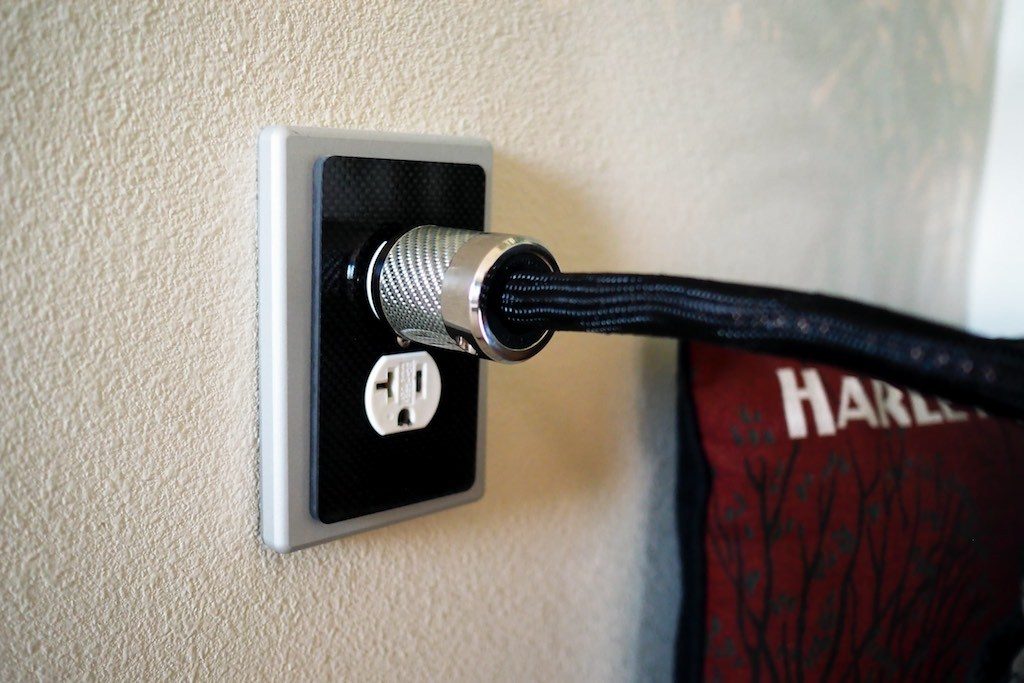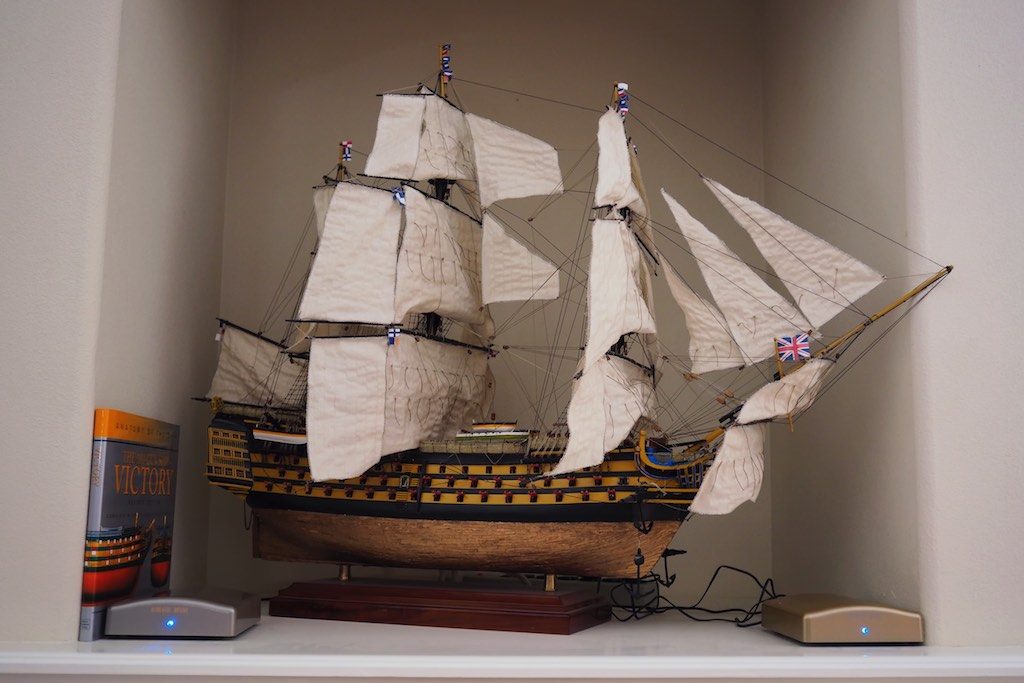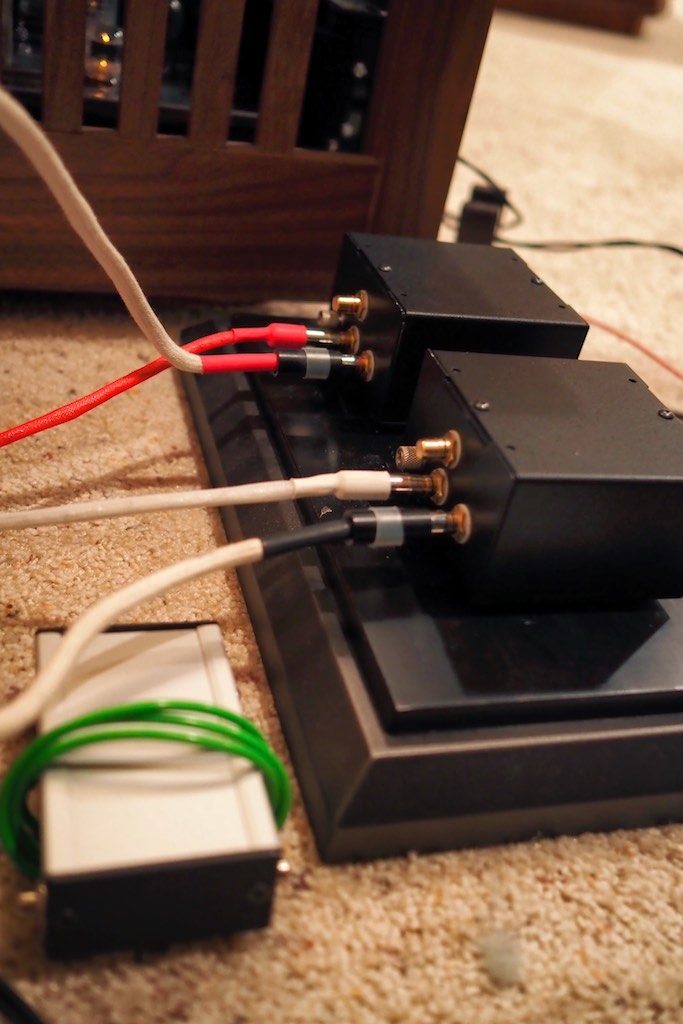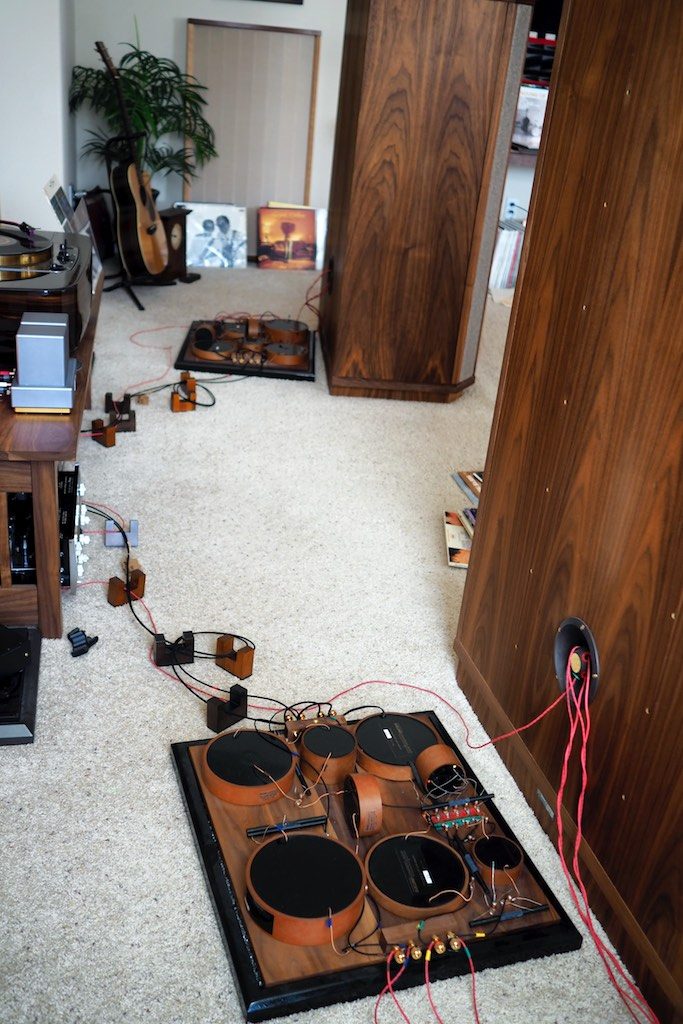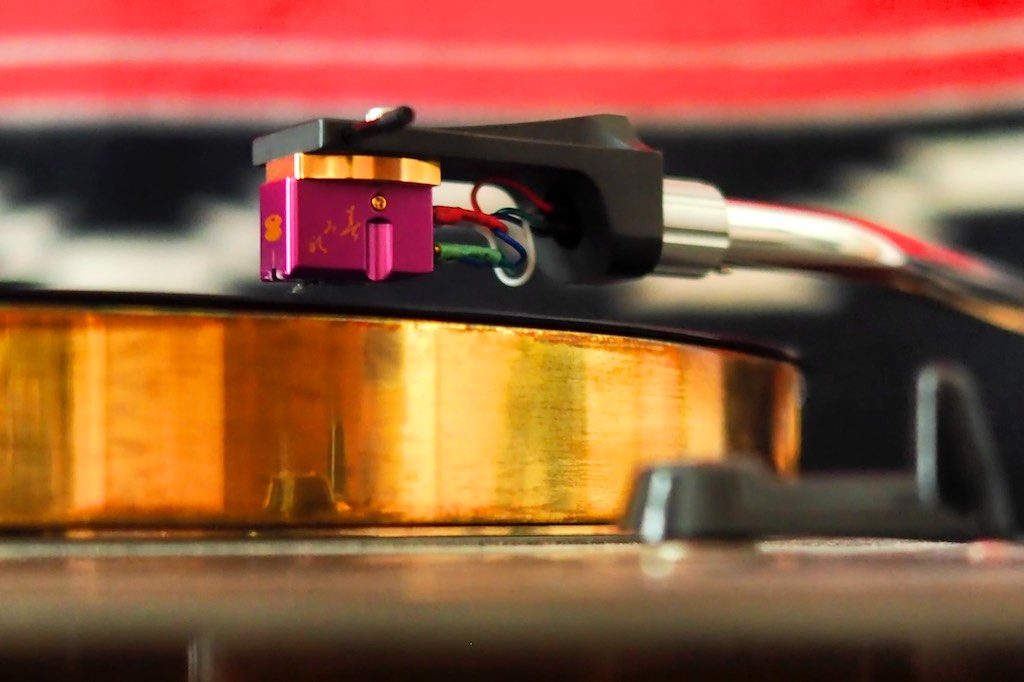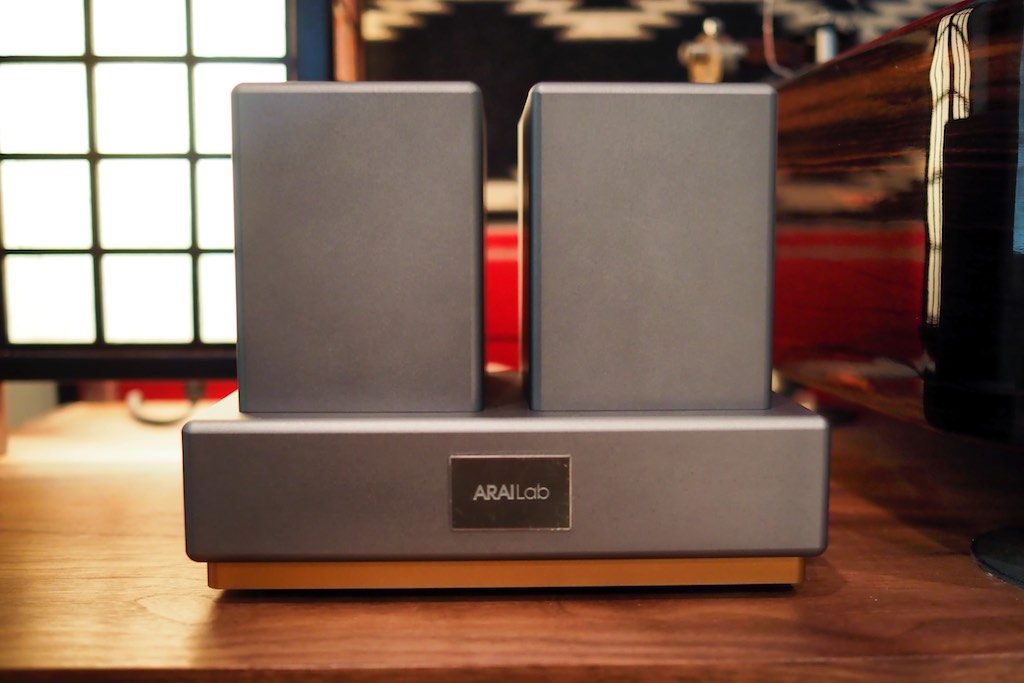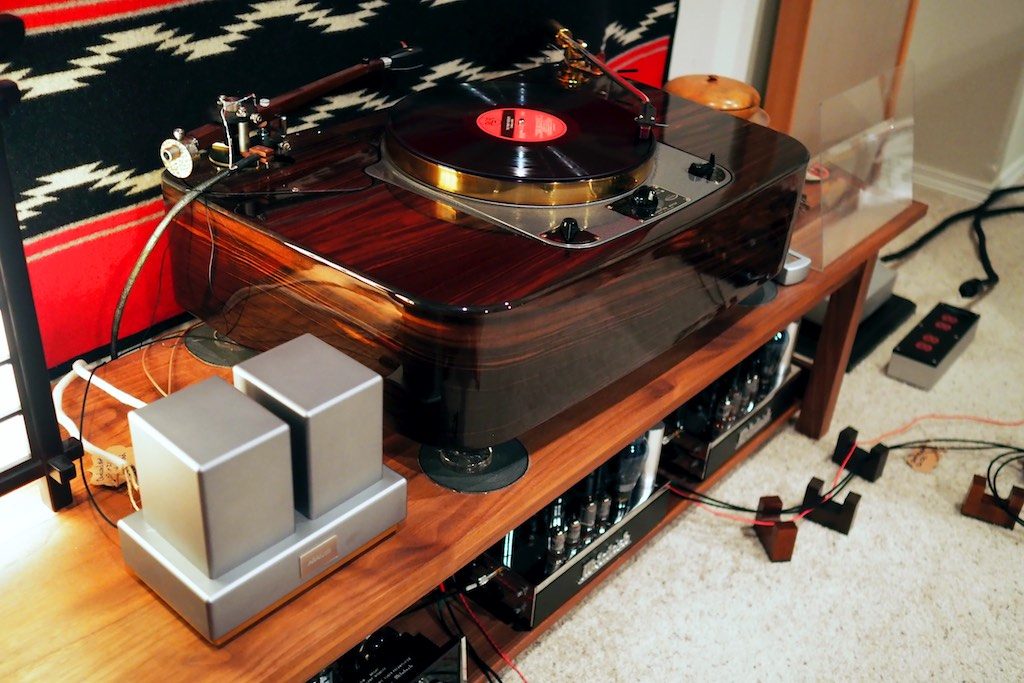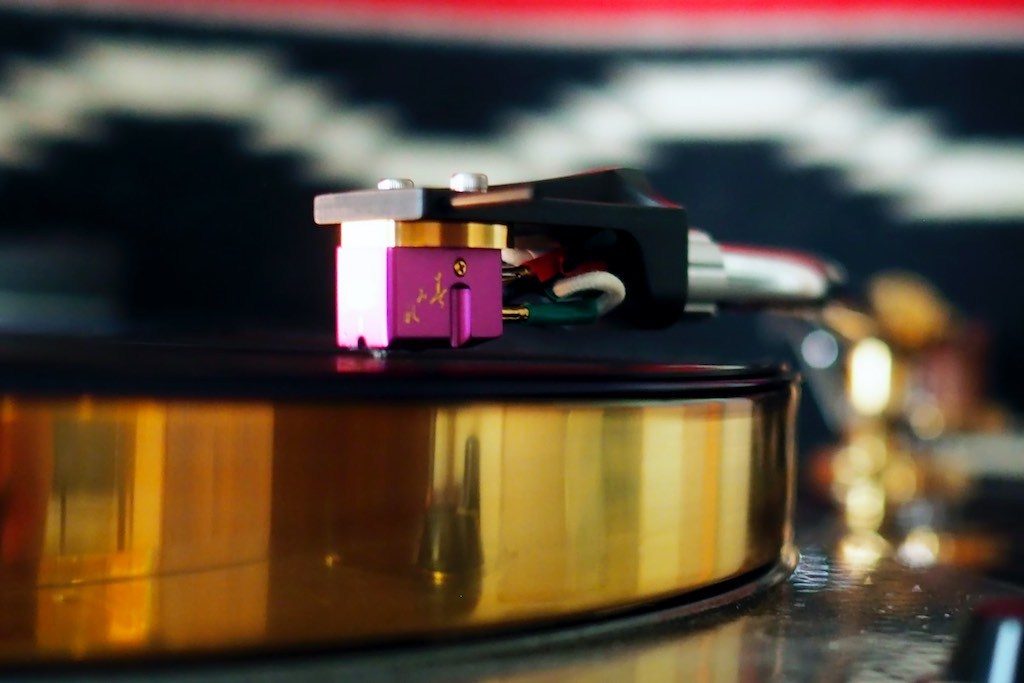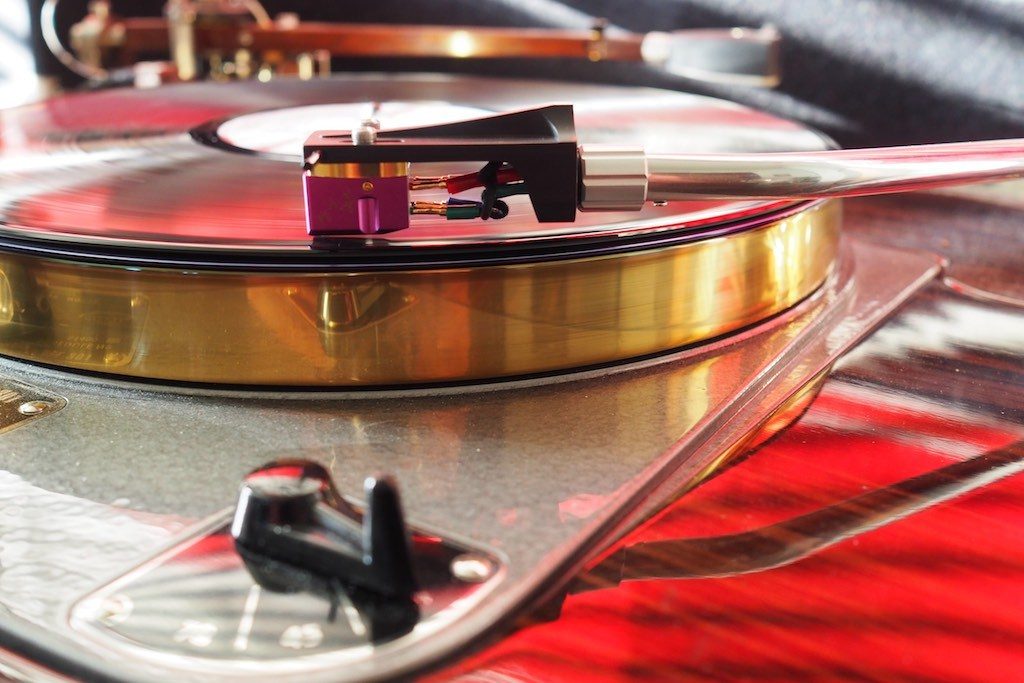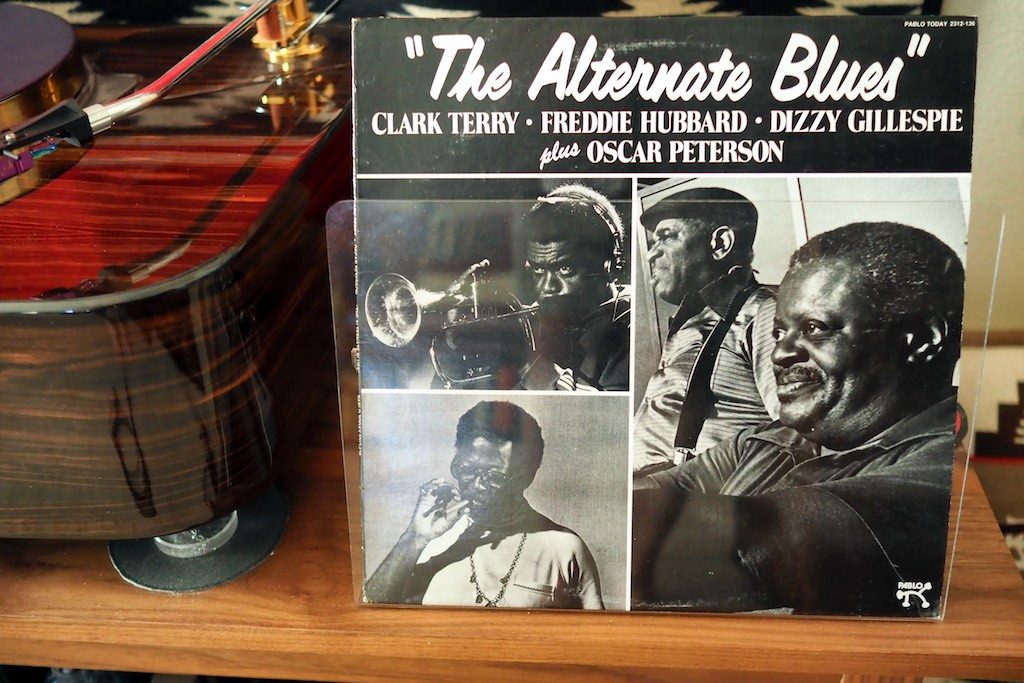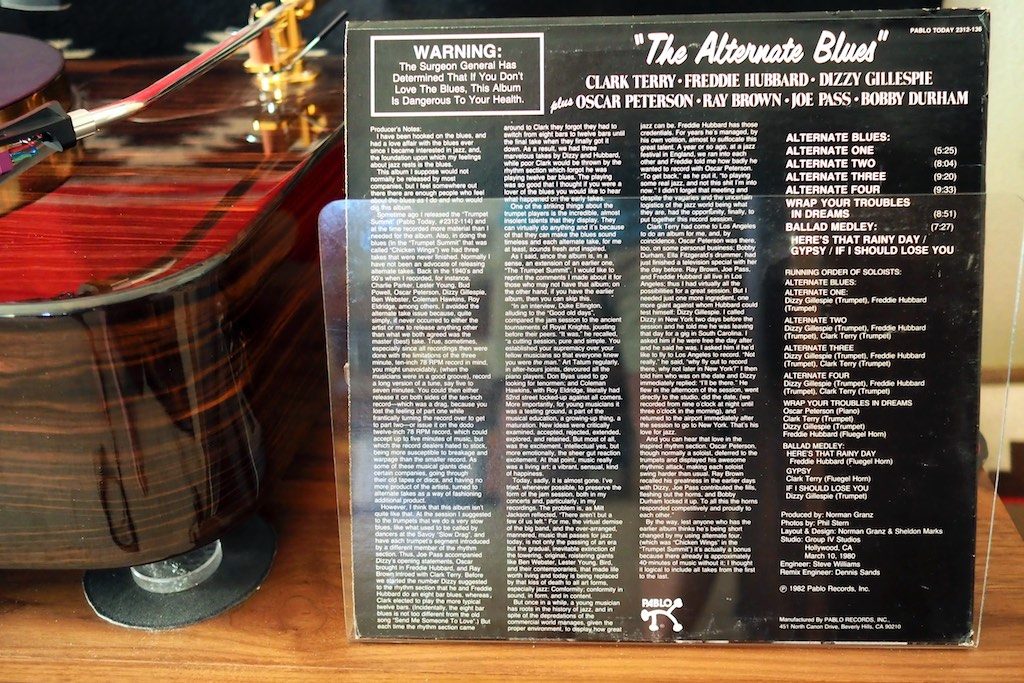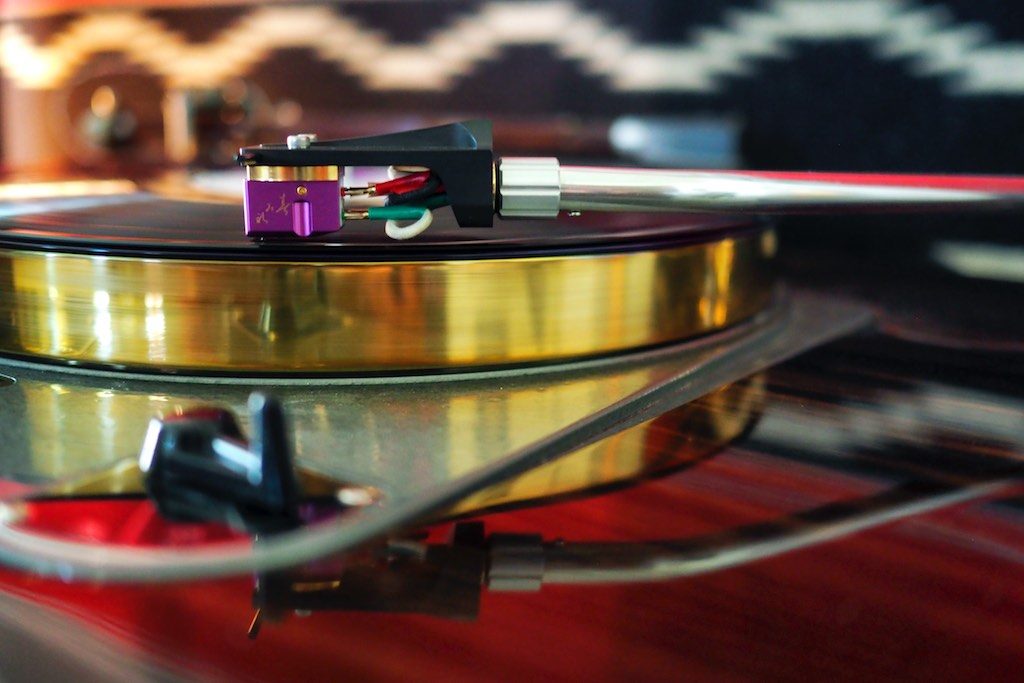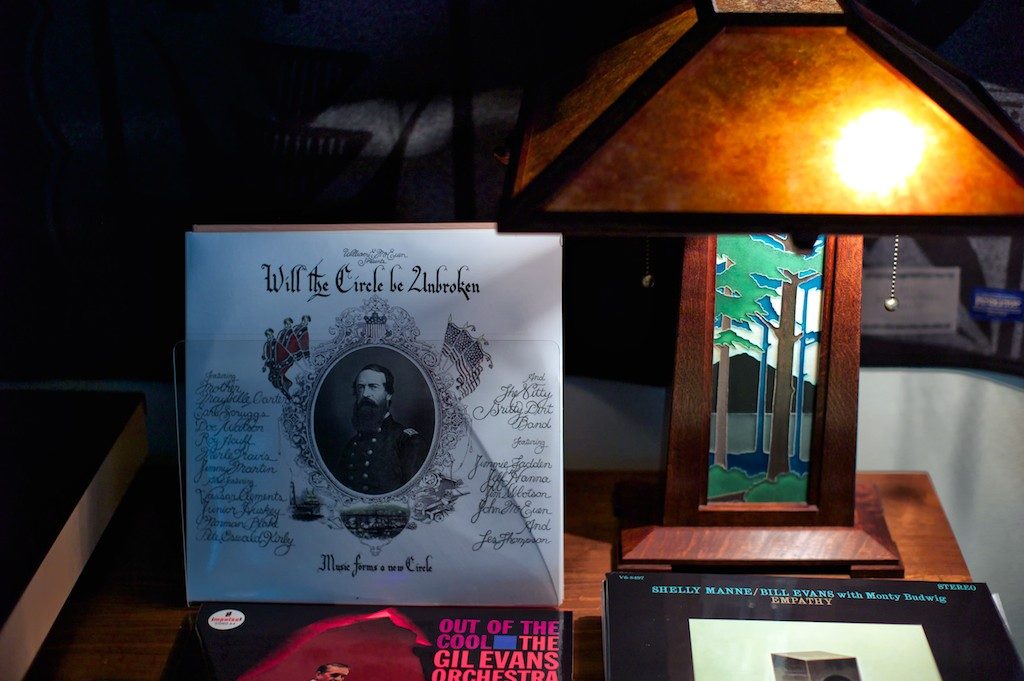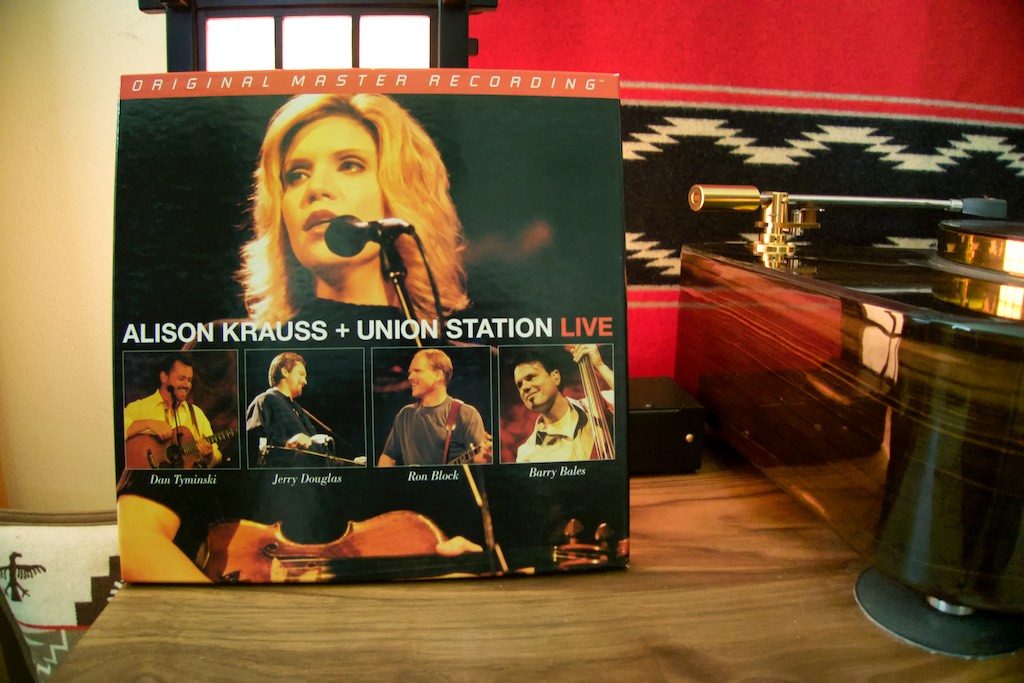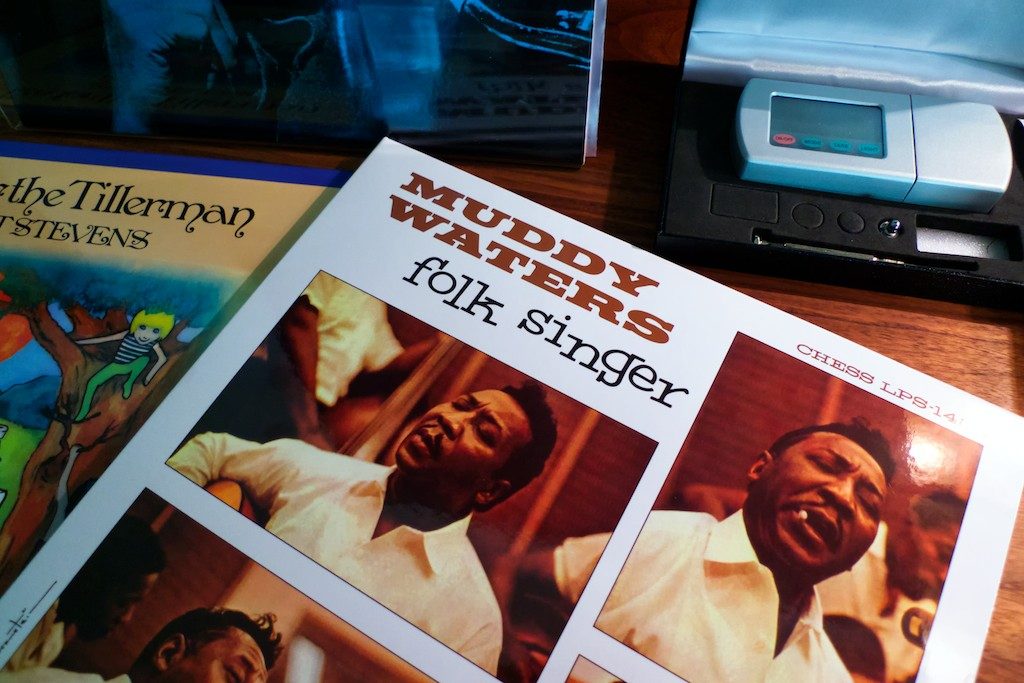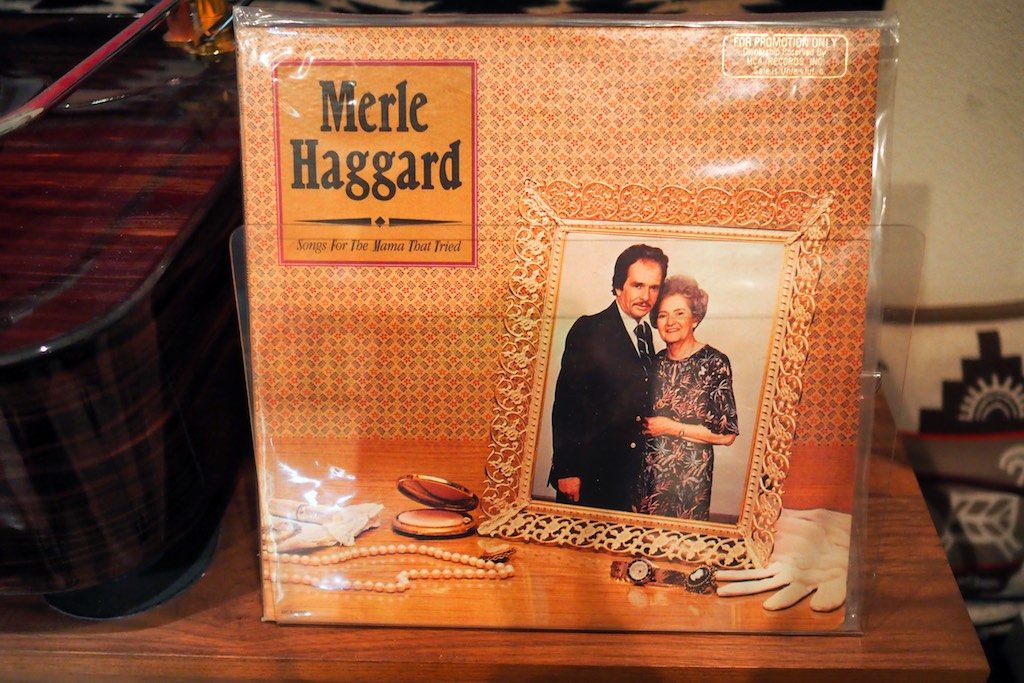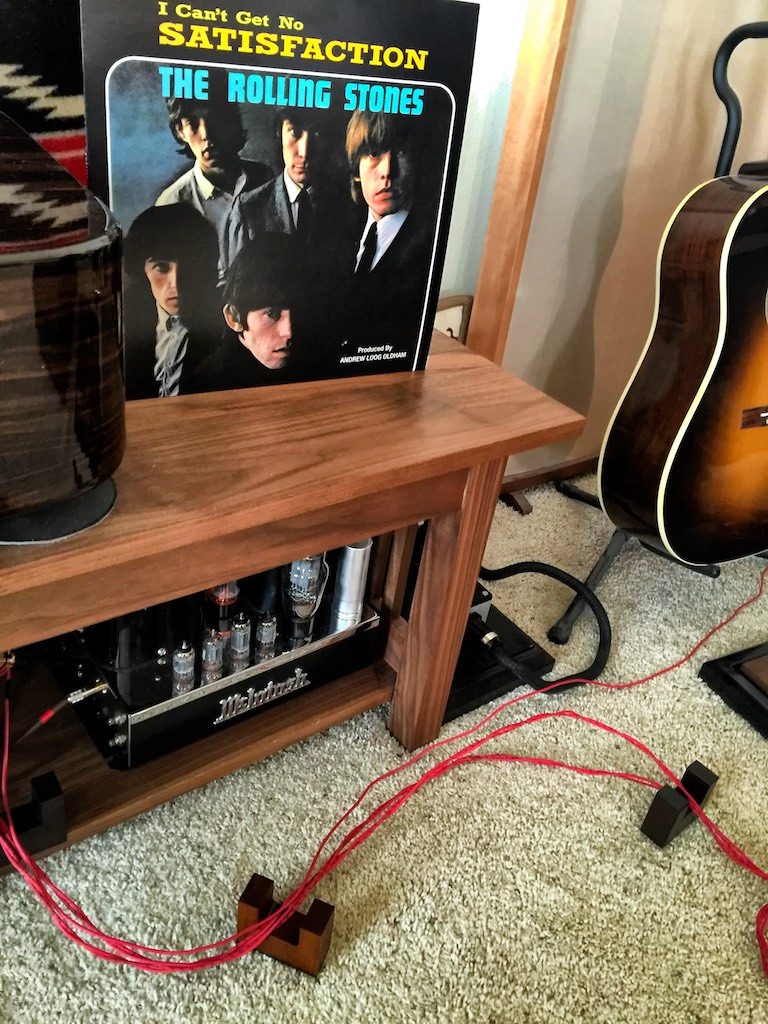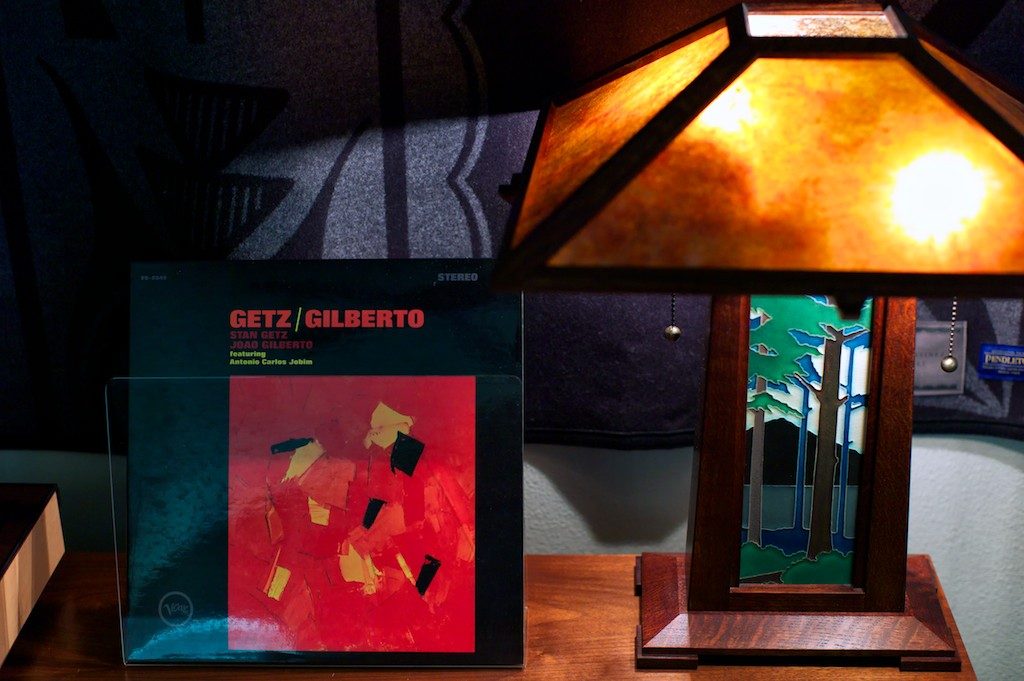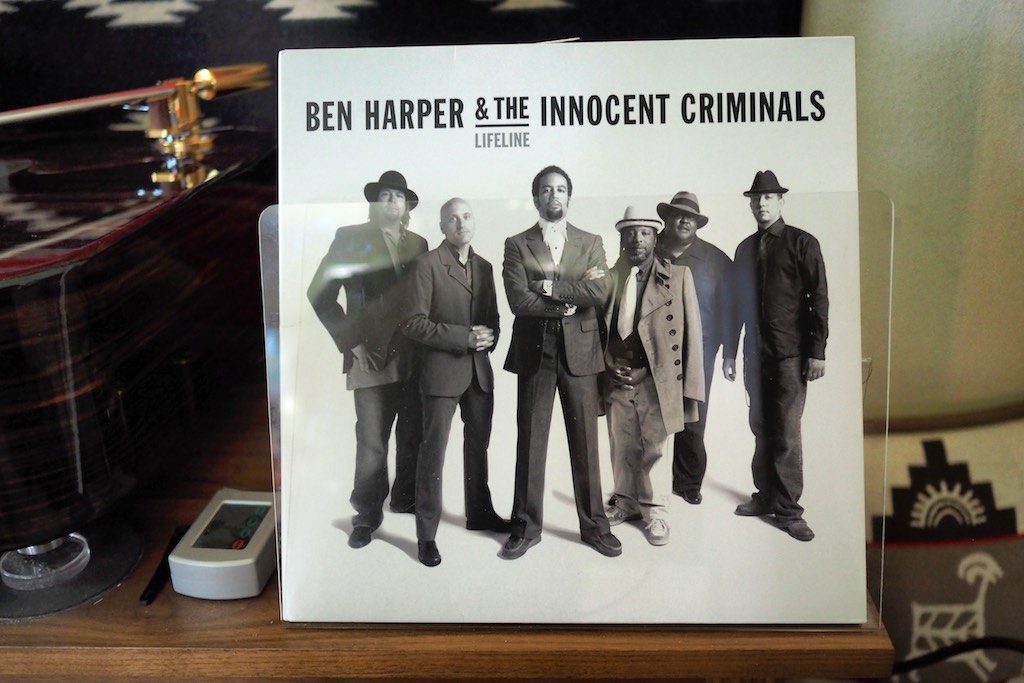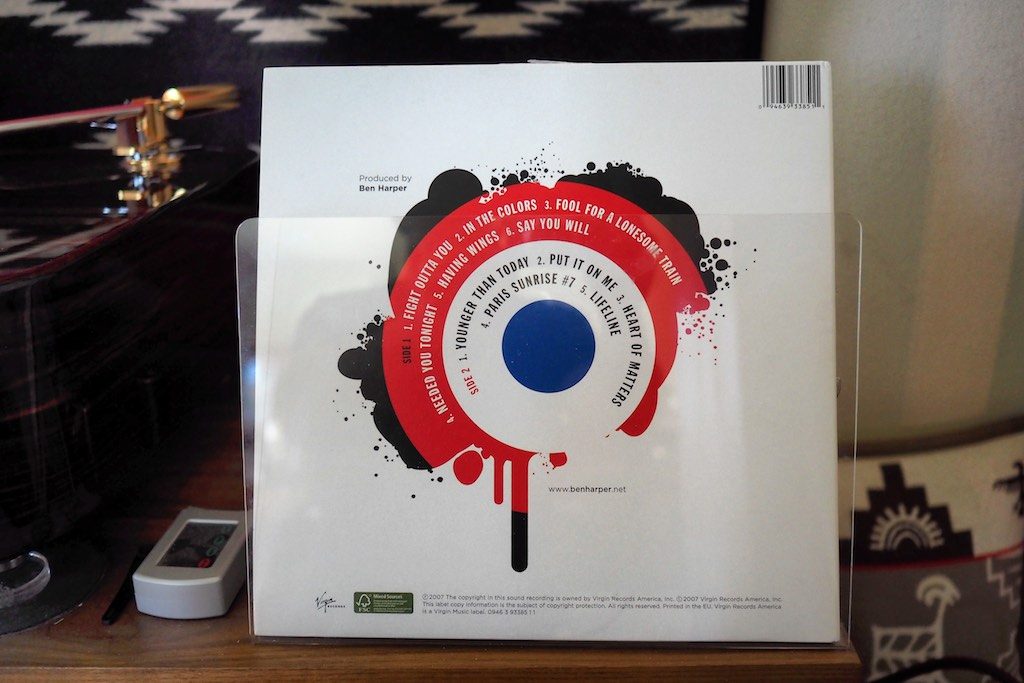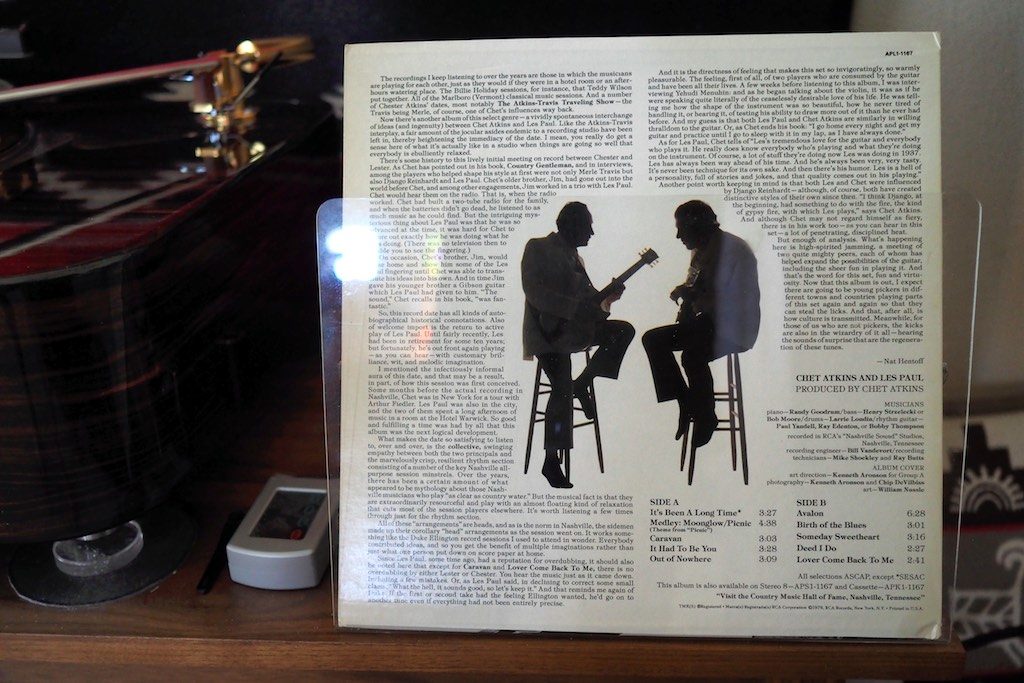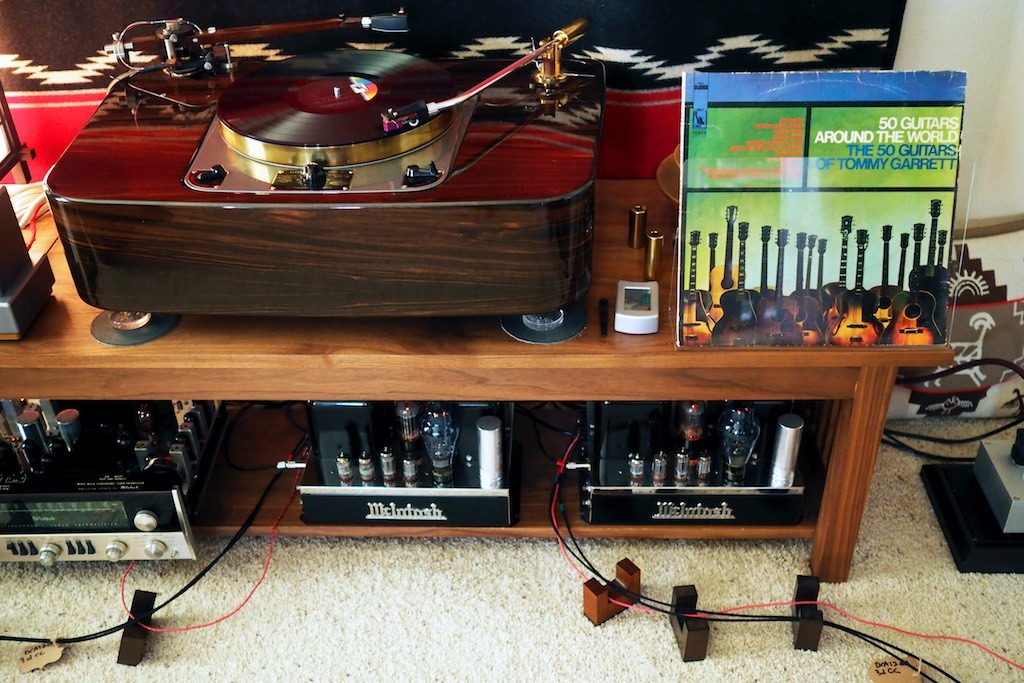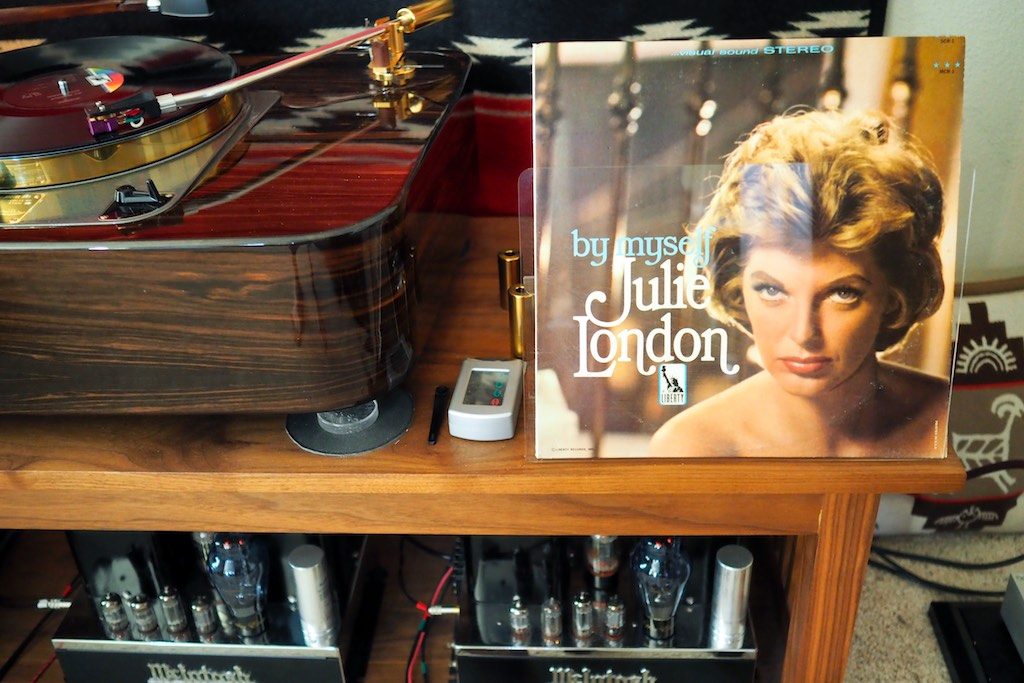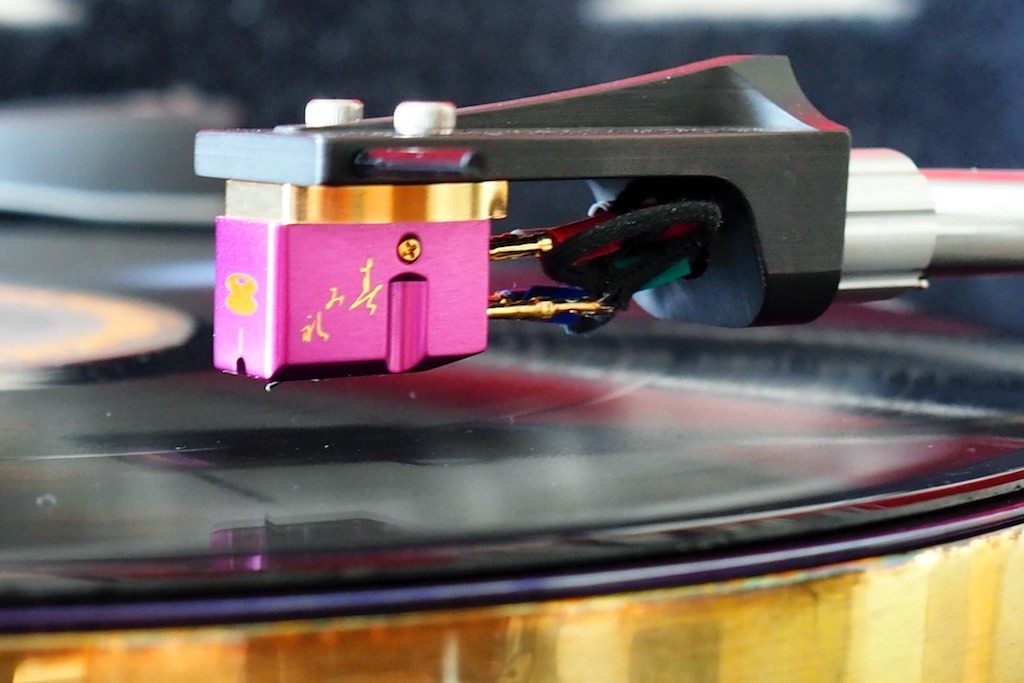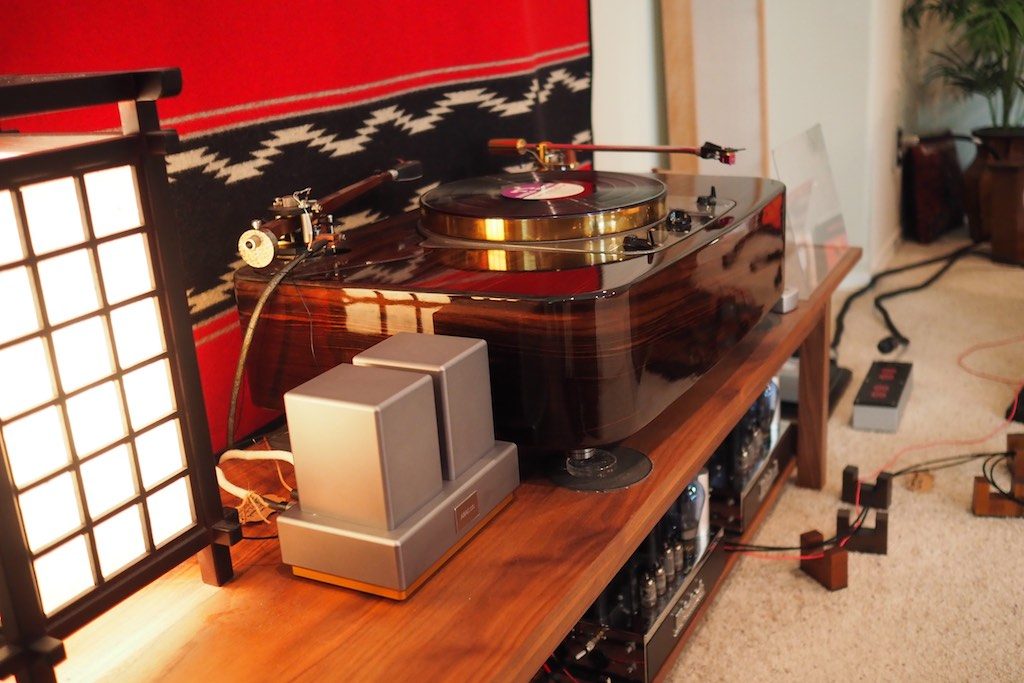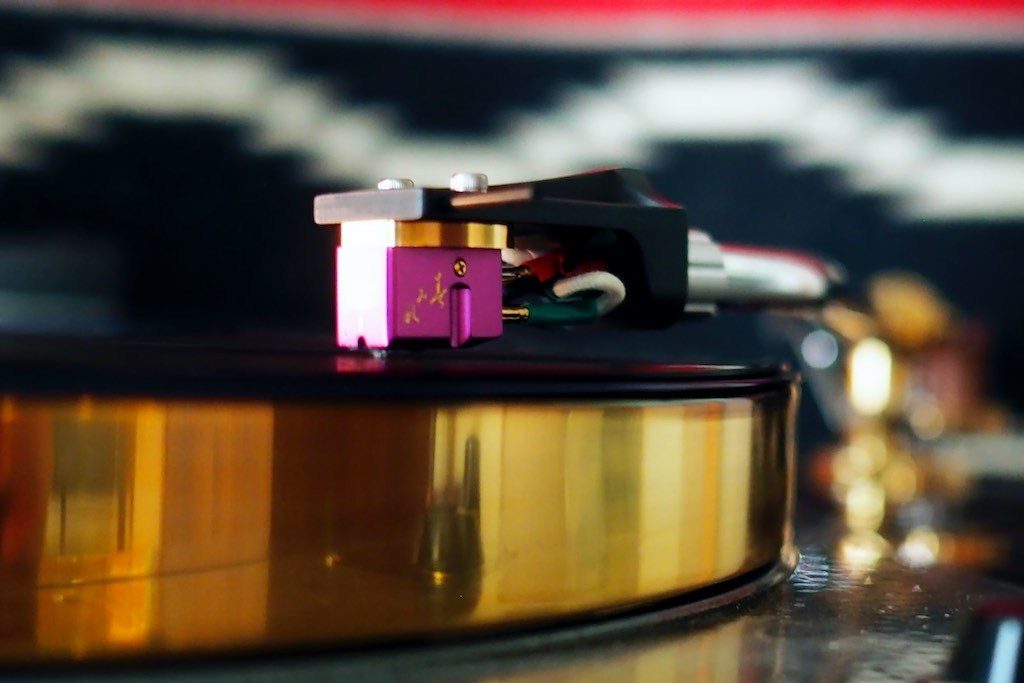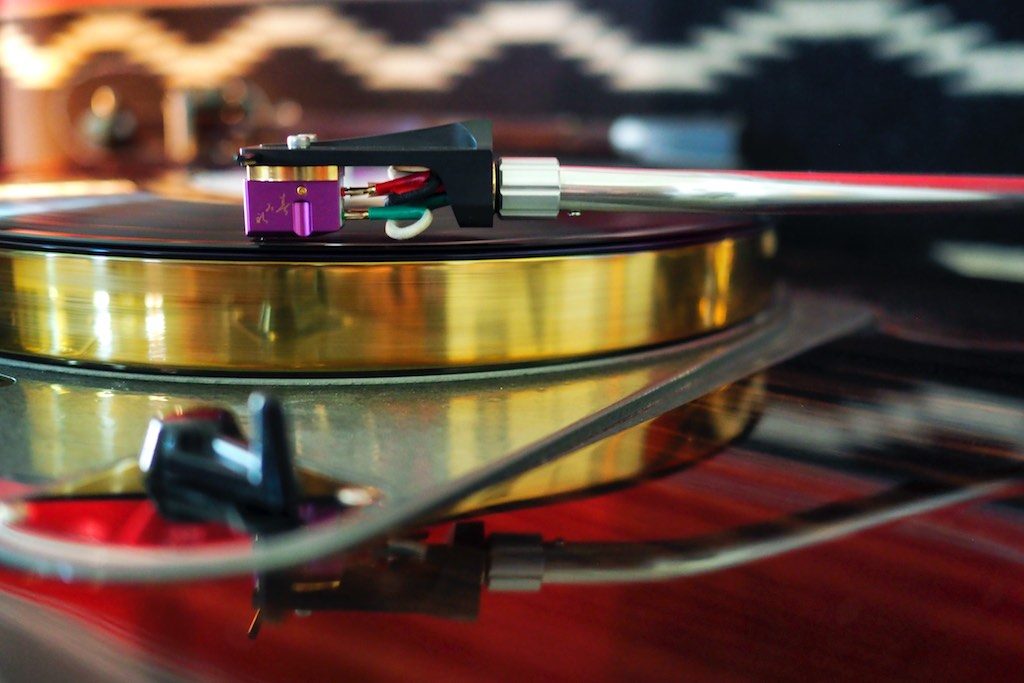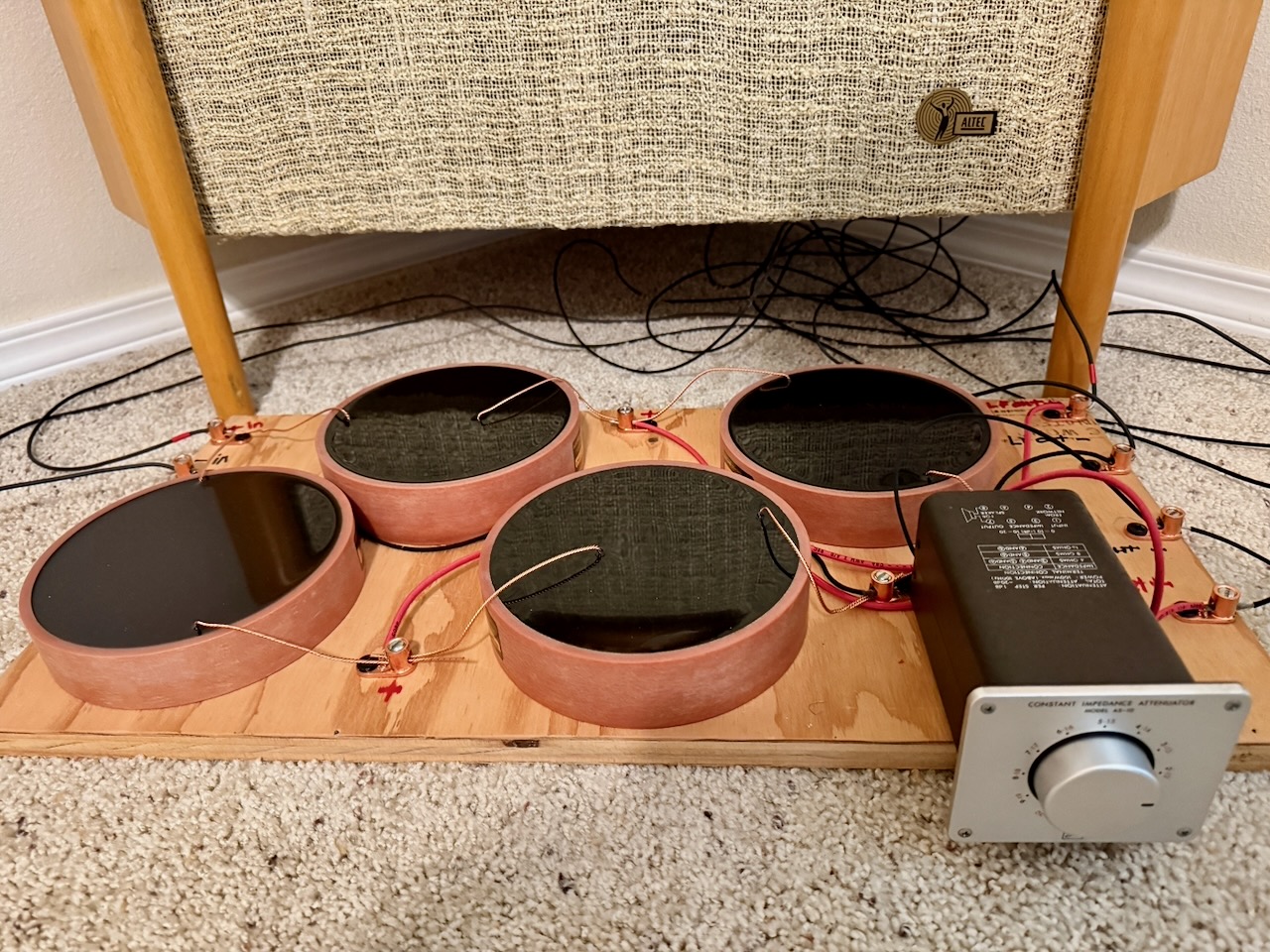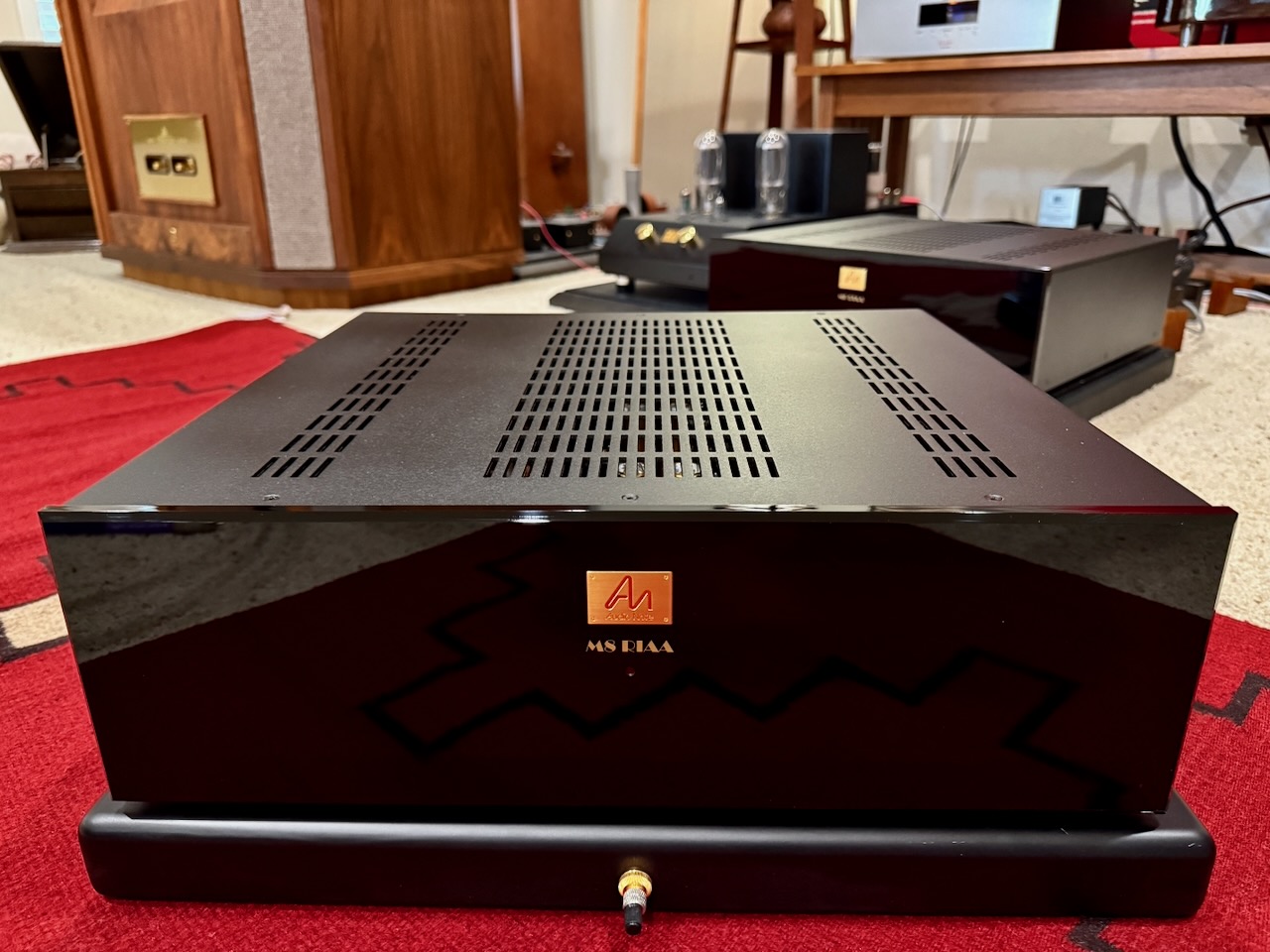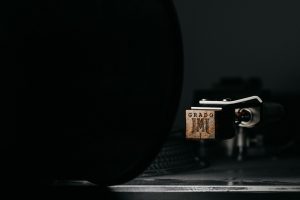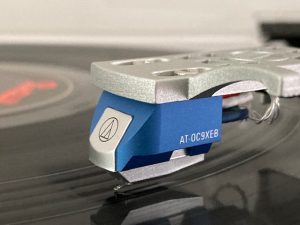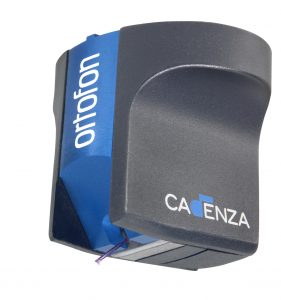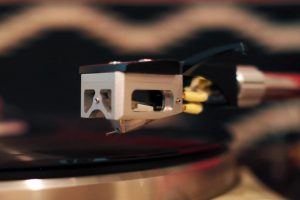Ever since the first moving-coil phonograph cartridge was developed in 1948 by Holger Christian Arenstein (the Ortofon Mono-A), phono cartridge designers have been working at maximizing & refining the performance of moving-coil cartridges by trying various topologies & materials combinations for the stylus, cantilever, coil wire, suspension, magnets, pole pieces, internal wiring, cartridge housings, cartridge pins, and so forth.
The idea of a moving-coil cartridge as an electro-mechanical device seems simple enough. As it traces the record groove, the stylus/cantilever is moved by the tiny modulations of the record grooves' mechanically encoded waveform, which moves the coil connected to it in a magnetic field, resulting in a weak electrical signal reproducing the waveform, which can then be amplified and played through loudspeakers as music.
However, when you consider that each part of the moving-coil cartridge can be made of different materials, have different shapes, have different internal topology, etc., the amount of potential combinations is staggeringly large.
For example, just a few of the questions a phono cartridge designer might ask are, "What material do I choose for a stylus? What shape of stylus do I choose? What material do I choose for a cantilever? What dimensions do I choose for a cantilever? What material do I choose for the suspension? How many turns of wire for the coil should I choose? What material should I make the coil out of? What dimensions of wire should I use in the coil? What magnet material should I use? What magnet field strength should I use? What kind of wire do I wire it with internally? What pins should I use for connections? What material should I make the base out of? What material should I make the body out of? What should its final appearance look like?"
You get the idea, there's an almost endless list of questions and permutations one could entertain when designing a moving coil cartridge, and each designer will make certain choices to achieve what they want musically & sonically from a cartridge.
Mr. Daisuke Asai and Murasakino, Ltd.
Mr. Daisuke Asai is the designer of the state-of-art Murasakino Musique Analogue Sumile moving-coil phonograph cartridge featured in this article.
Mr. Daisuke Asai told me that he has been interested in audio since his university days, and has enjoyed listening to analogue discs with tube amplifiers that he has built himself.
Asai-san told me, "The first tube amp I built was a single-ended amp with 46 tubes in a triode connection. I was well satisfied with the sound of this amp even though the power was very small."
"Back then I was employed by Denon Lab, mainly handling DALI and Infinity loudspeakers, which were imported and distributed by Denon Lab for the domestic market."
"However, when Denon Lab was integrated into D&M Holding (Denon & Marantz), I left and went to work for A&M Limited (Air Tight), so I could utilize my knowledge of tube amplifiers at Air Tight."
"At A&M, I was managing tests and inspections of Air Tight products, as well as inspections and sales of Transrotor products, which A&M was importing. I was very thankful that I had a chance to work with the designer of Air Tight, Mr. Ishiguro, who I learned a great deal from."
"It was difficult for me to develop my own products while working as a staff person for a manufacturer, so I decided to go out on my own and I established my own company, Murasakino, Ltd., in Kyoto, Japan."
The Murasakino Musique Analogue Sumile Moving-Coil Phonograph Cartridge
The Murasakino Musique Analogue Sumile moving-coil phonograph cartridge is a state-of-art phonograph cartridge that is meticulously hand-crafted down to the finest details.
Asai-san told me, "I did a lot of tests in the development of the Sumile so I would not get only the best sound, but I also wanted to make the Sumile a beautiful MC cartridge whose design would please many people."
"I think the selection of the materials used in the design are a most important consideration. Just choosing expensive materials is not always the best choice, but rather choosing materials that combine complementary eigentones to give a good overall reverberation is most important. Many tests are necessary to discover the best combination of eigentones for a particular phono cartridge design." (An eigentone is a characteristic resonance frequency of a material - Jeff)
Asai-san says he has achieved what he considers an optimum relationship between output voltage and impedance in the Sumile's design, of 1.2 Ohm and 0.35mV, respectively.
Asai-san has achieved this very low impedance of 1.2 Ohms by using fewer turns in the moving coil (the fewer the turns in the coil the lower the resistance).
Generally speaking, having fewer turns in a coil is associated with the coil being more responsive to subtle stylus movements, having less signal loss due to the fewer coils, but with fewer coil turns the output voltage is generally decreased.
However, in the Sumile's case, the output voltage is 0.35mV, which is a bit higher than my Ortofon SPU Classic GM MkII's 0.2mV, slightly higher than my Denon DL-103's 0.3mV, albeit quite a lot lower than my EMT TSD-15N's robust output of 1.05mV.
Asai-san chose neodymium for the magnet, solid boron for the cantilever, and diamond for the stylus, in a semi line-contact shape.
Asai-san chose a base of stainless steel for the Sumile, "The cartridge's base to which the power-generation system, including the coil, are attached is made of stainless steel. Stainless steel is renowned for its stable sound quality and has been incorporated into products such as tonearms (and some cartridges) by many manufacturers. Compared to aluminum, stainless steel is more rigid and harder to process, but the high-quality result makes the difficulty worthwhile. The creates a sound for the Sumile that is just not possible from aluminum."
"But not stopping there, we bring the Sumile to perfection by gold plating the processed stainless steel. Gold plating not only coats and protects the stainless steel, but also improves the overall sound quality. Gold plating the Sumile base was inspired by how various platings on wind instruments transform and improve their sound."
Asai-san plays the oboe for pleasure, and one of his benchmarks for a phono cartridge is how well it can reproduce the sound of an oboe, which is a double-reed woodwind instrument that generally plays in the treble or soprano range. Notably, gold plating is used strategically on the keys of the oboe to soften and beautify the tone, and was the inspiration for gold plating the Sumile's stainless steel base.
The Sumile's body is constructed of an A5056 aluminum alloy, finished in an attractive violet finish (Sumile means "violet" in Japanese).
The Sumile's body is highlighted with gold script, originally developed by the chief priest of a temple in Kyoto 1000 years ago, and the three letters say Sumile in Japanese: す(Su) み(mi) れ(le).
There is also a gold logo design on the front of the Sumile, comprised of two vertically stacked circles.
Asai-san said, "The circle at the top figuratively represents a phonograph record, and the one at the bottom represents the platter of a turntable. By making these two circles contact each other, we attempted to figuratively represent the moment when the disk is placed onto the platter, as this is a most exciting moment for analog-music enthusiasts when they play a record!"
The Sumile came beautifully packaged in an artful craft-paper box with a violet-hued finish.
Upon opening the Sumile's exterior box, within I found another protective box covered in a burgundy & cream patterned fabric.
Upon opening the inner box, I found a nice art paper & fabric cover, and the warranty & specifications cards.
And under those—Voilà!—was the Sumile cartridge along with some mounting tools & screws.
Normally I wouldn't say much about packaging, but the Sumile's was done so artfully, and with such care & attention to detail, that I thought it was worth mentioning, because that same artful attention to detail is what sets the Sumile apart not only in packaging, but in its design & construction as well.
As I held the Sumile in my hand and inspected its ultra-quality of materials, hand-crafted nature, and impeccable fit & finish, I certainly got a sense of the luxury and quality evoked by this exotic gem of a cartridge, which I'm sure is the impression that Mr. Daisuke Asai of Murasakino Ltd., who designed the Sumile, desired for his "ultimate analog product".
When I look at the Sumile, touch it, and read through Mr. Daisuke Asai's messages, it is obvious to me that he has put a great deal of planning, insight, careful choice of materials, and listening into the design of the Sumile, and along with the attention to detail to its beautiful finish and packaging, it is clear that the Sumile embodies Asai-san's vision for the ultimate moving-coil phono cartridge.
As printed on the technical data card included with the Sumile, the specifications are as follows:
- Frequency Response: 10 to ~50,000Hz
- Output Voltage: 0.35mV/1kHz
- Internal Impedance: 1.2 Ohms
- Tracking Force: 1.9 to 2.1 grams
- Cantilever Material: Boron
- Weight: 14.5 grams
As I mentioned earlier, the Sumile moving-coil cartridge has a low internal impedance of 1.2 Ohm.
In comparison, my Ortofon SPU Classic GM MkII has an internal impedance of 2 Ohms, my EMT TSD-15N has an internal impedance of 24 Ohms, and my Denon DL-103 has an internal impedance of 40 Ohms.
So, the 1.2 Ohms of the Sumile is very low indeed, which should be taken into account when matching it with a step-up transformer (SUT), as it's more toward the lowish SPU internal impedance end of the spectrum (2 Ohms)—but even lower at 1.2 Ohms—than at the higher internal impedance end of the spectrum, like the venerable Denon DL-103's 40 Ohms.
Review Equipment
For this article, I used my primary music listening system.
My loudspeakers are Tannoy Westminster Royal Special Edition's, rewired internally with vintage Western Electric WE16GA tinned-copper wire, with the internal crossovers bypassed in favor of custom external Duelund Coherent Audio CAST crossovers, which themselves are wired internally with the Duelund DCA series of tinned-copper wiring (survey review of DCA wires to come).
I'm using restored & hot-rodded vintage McIntosh vacuum tube electronics for amplification. For line and phono amplification & equalization I'm using the McIntosh MX110Z tuner-preamplifier, and for power amplification I'm using monaural McIntosh MC30 amplifiers.
My turntable is a highly hot-rodded Garrard 301 from Classic Turntable Company, the Classic 301, installed into a plinth from Artisan Fidelity, and mounted with a Pete Riggle Audio Engineering Woody SPU tonearm & a Thomas Schick tonearm.
The Woody SPU tonearm has an Ortofon SPU Classic GM MkII stereo phono cartridge installed on it, which is stepped up into the MX110Z through a bespoke Intact Audio dual mono step-up transformer (SUT) designed to complement my Ortofon SPU Classic GM MkII.
My Thomas Schick tonearm is generally mounted with an Ortofon SPU Mono CG 25 Di MkII mono phono cartridge that I use for listening to mono records, and whose 1.5mV output does not require a SUT.
To connect the Intact Audio SUT to the MX110Z preamp I use shielded Duelund DCA16GA tinned-copper interconnects, to connect the MX110Z preamp to the MC30 monaural amplifiers I use unshielded Duelund DCA20GA tinned-copper interconnects, and to connect the MC30 monaural amplifiers to the Duelund CAST crossovers of the WRSE's, I use Duelund DCA12GA tinned-copper speaker cables.
All of my electronics are plugged into an Acoustic Revive RPT-6 Absolute NCF power distributor, which is connected to my wall outlet with an Acoustic Revive Power Reference TripleC NCF AC power cord (recently reviewed here).
My wall outlet consists of an Acoustic Revive CB-1DB receptacle base plate, CFRP-1F carbon fiber outlet plate, and an Acoustic Revive modified Oyaide R-1 receptacle, which makes for a very good sounding AC wall outlet, and provides a very solid & secure interface to plug the Power Reference AC power cord into.
For accessories, I should mention the ever-present pair of Acoustic Revive RR77 & RR888 Schuman wave generators that provide room/system/brain(!) conditioning, …
… the Acoustic Revive RST-38 quartz under-boards that I have under my Intact Audio SUT's and Acoustic Revive RPT-6 Absolute NCF power distributor, which by the way, were the inspiration for the integrated under-boards built into my Duelund CAST crossovers, …
…, the Acoustic Revive RCI-3 cable insulators (lifts), and the three studio-like Acoustic Revive RWL-3 acoustic conditioning panels that you can see demurely standing in the background on the front wall behind my Westminster's, and on the right side-wall (below).
Listening Impressions
To get started, I replaced the Ortofon SPU Mono CG 25 Di MkII mono phono cartridge on my Schick tonearm with the Murasakino Musique Analogue 'Sumile' moving-coil phonograph cartridge that I mounted on my Thomas Schick graphite headshell (my favorite headshell), and went through my cartridge / tonearm setup regimen to get all the parameters dialed in.
Then, I began experimenting with the Sumile's voicing by using various step-up transformers (SUTs) and interconnect combinations, and I found the Sumile to be very responsive to voicing over a wide range of musical & sonic attributes, which is a real plus for being able to dial-in the Sumile's performance for different systems and/or tastes.
Depending on the tonal qualities of the particular SUT and interconnect combination, I found I could combine them to voice the Sumile in a number of different ways that emphasized various musical & sonic attributes.
For example, with the combination of my Intact Audio dual mono SUTs and shielded Duelund DCA16GA interconnects, the Sumile had a very vivid presence, with great tone color resolution, a high degree of transparency, an excellent portrayal of beat, tempos, and rhythm, and an information rich presentation.
As another example, the combination of my Auditorium 23 SUT with shielded Duelund soft-annealed 1.0 silver/silk interconnects proved to be an impressive match for the Sumile, and produced an astonishing amount of soundstage layering, timbral & overtone nuance, with a huge sense of space, finely articulated imaging, and a nice sense of beat, tempo, melodies, and rhythm.
Ultimately, my favorite SUT with the Sumile was the Arai Lab MT-1 (in for review), that has been designed specifically to get the best out of very low internal impedance phono cartridges, like the Sumile.
It shouldn't come as any surprise, I suppose, that the massive (it's almost as big as one of my MC30 monaural amplifiers!) Arai Lab MT-1 SUT that is designed specifically to get the best out of ultra-low impedance phono cartridges, got the best out of the Sumile.
The combination of the Arai Lab MT-1 SUT, connected to the phono stage of my MX110Z with shielded Duelund 1.0 silver/silk interconnects, was my favorite match for the Sumile.
The combination yielded an impressively transparent yet natural sounding presentation, that was rich in timbral & tonal nuance, vivid image presence, highly resolved tone colors, a huge sense of space, a deeply layered soundstage, realistic timbral textures, and a high degree of dynamic agility that brought the beat, melody, and rhythm to life.
Finally, I experimented with different headshell leads for the Schick graphite headshell. If you've not yet tried experimenting with different headshell leads, you're in for a nice surprise one of these days.
I've found that most stock headshell leads are nothing to write home about performance-wise, and a well-chosen pair of high-performance headshell leads can elevate the performance of an entire system much in the same way as a pair of good interconnects or speaker cables can.
I've tried a number of different headshell leads, my favorites being leads made from vintage Western Electric WE24GA tinned-copper wire, and DIY headshell leads I made with Cardas clips and either vintage-style 22-gauge Gavitt tinned-copper cloth insulated pushback wire from The Art of Tone, or Duelund DCA26GA tinned-copper wire in an oil-soaked & baked cotton dielectric.
I found both the Art of Tone and Duelund DCA26GA headshell leads were dramatically better than the stock leads provided with the Schick graphite headshell, and elevated the performance of the Sumile with the Arai Lab MT-1 SUT and shielded Duelund 1.0 silver/silk interconnects, even further.
The Art of Tone headshell leads were richer sounding, tonally more laid-back, less transparent, and less detailed sounding than the Duelund DCA26GA, which were more neutral sounding, more forward, more transparent & spacious, and more resolving.
The Sumile's voicing was so responsive to different step-up transformer, interconnect, and headshell combinations, that I found it quite entertaining and rewarding hearing the different voicing combinations that were possible.
In the end, I thought the Arai Lab MT-1 SUT, Duelund 1.0 silver/silk interconnects, and the Art of Tone headshell leads were the 'magic' combination for the Sumile, yielding a level of performance that I found deeply impressive both musically and sonically.
Being very satisfied with the final voicing and setup I achieved with the Sumile, I settled in for a little listening with The Alternate Blues (Pablo, 1980), featuring the all-star lineup of Ray Brown (double bass), Bobby Durham (drums), Dizzy Gillespie (trumpet), Freddie Hubbard (trumpet, flugelhorn), Joe Pass (guitar), Oscar Peterson (piano), and Clark Terry (trumpet, flugelhorn).
The studio recording, and production by Norman Granz, are first rate, and The Alternate Blues is one of my favorite jazz albums to listen to just for the fun of its great musicianship, as well as being a very informative album for evaluating that important triad of tone, dynamics, and presence, that makes recorded music feel 'real' and 'live' in one's listening room.
When musicians talk about 'tone' it can refer to quite a few different things, like pitch, an interval of music steps (half-steps, whole-steps), tone color (chordal variations resulting from adding additional pitches to three tone triads), or the general character or quality of the sound of an instrument or musician's playing, as in "Miles Davis got awesome tone out of his large-bore Martin Committee trumpet and Heim 2 mouthpiece!".
When I say 'tone' in writing about audio, I'm generally referring to it either in the sense of a particular component's ability to clearly articulate the tone colors used in various styles of music, or as a general character or quality of the sound, as in "The Sumile has beautiful tone, sounding rich, colorful, nuanced, and timbrally natural," which it does when listening to The Alternate Blues, for example.
One of the things the Sumile phono cartridge does really well is presence, forming distinct and vivid aural images, that gave me the feeling that the musicians & instruments were there in the listening room with me.
I quite literally got the chills while listening to the trumpet & flugelhorn playing of Dizzy, Freddie, and Clark, with the vivid—almost eerie at times—presence the Sumile makes possible, along with its prowess from the smallest & softest dynamic contrasts, to the largest and most dramatic dynamic swings, which makes the trumpet & flugelhorn improvising around the melody intensely emotionally involving to listen to on The Alternate Blues.
The Alternate Blues offers a musical tour de force of trumpet playing, where Dizzy, Freddie, and Clark take turns as they improvise around the music's melody line, with each one trying to outdo the other with their techniques, ideas, and emotional expressiveness, as they demonstrate their unique interpretation and mastery of the "Alternate Blues" in the four different takes that are included on the album.
Over the review period, I continued to be impressed by the Sumile's natural sounding, information rich presentation, full of nuances and subtleties, that made the music shimmer with luxurious timbral textures, and a certain dynamic prowess that makes the moment-by-moment flow of the melodic improvisation in the solos come to life in such a captivating and expressive way.
I would be remiss if I didn't discuss how the rhythm section of Ray Brown (double bass), Joe Pass (guitar), and Oscar Peterson (piano) contributed to the different takes of the "Alternate Blues" included on the album, and how the Sumile gave their musical contributions a "living voice" that beautifully complemented the trumpet segments.
In a rather brilliant tact by producer Norman Granz, he had each member of the rhythm section introduce a trumpet segment, with Joe Pass introducing Dizzy Gillespie, Oscar Peterson introducing Freddie Hubbard, and Ray Brown introducing Clark Terry.
At the beginning of the "Alternate" takes when Joe Pass intro's Dizzy Gillespie, the Sumile impressed me with an intimate sense of the tone and timbre of Joe's guitar, and the virtuosity of Joe's chordal and melody playing, which were clearly and articulately rendered even as he moved into a background harmony role as Dizzy came to the forefront during his trumpet segment.
The same holds true for Ray Brown's bass playing and Oscar Peterson's piano playing, both in their intro's, and as they assumed inspired background harmony roles to their respective trumpet segments, because the Sumile's relaxed clarity & resolution allowed their musical contributions to clearly and articulately come through from the background even in the presence of a dominating trumpet segment in the foreground role.
The Sumile's relaxed clarity & resolution is not at all etched or analytical, rather it just allows a lot of subtle tonal, timbral, and dynamic nuance to emerge that is meaningful from a musical standpoint, that are lost to a lot of phono cartridges, which makes the Sumile particularly satisfying to listen to music with.
The Sumile does a beautiful job of reproducing realistic timbral textures. Ray Brown's upright bass, Joe Pass' guitar, Oscar Peterson's piano, Bobby Durham's drums, and Dizzy's, Clark's, and Freddie's trumpets and flugelhorn, all sounded satisfying and enticingly real with the Sumile, maintaining a lot of live-like subtleties and nuance of textures that can go missing with other less resolving phono cartridges.
Another trait I really like about the Sumile is its prowess at articulating tone colors, those chordal variations that result from adding additional pitches to three tone triads, and which are partly responsible for giving different genres of music their 'feel' and the emotional vibe.
I think the ability of a phono cartridge to be able to distinguish and realistically present the subtleties and nuance of tonal colors is really important, as different musical genres are stylistically defined by groupings of tone colors that creates much of the 'musical feel' for that particular genre of music, which helps musicians craft a certain musical style and emotive feel to go with the music.
Audio equipment that blurs, homogenizes, bleaches, or alters tone colors can diminish the artistic intent and emotional impact of the music.
For example, simple forms of folk music, like some of those in Will the Circle be Unbroken, have tone colors focused around the sound of major and minor triads, but if you want to add in an emotive feeling of longing for lost love, you might add in a major 7th color tone, as some 'newgrass' and Celtic folk tunes do.
If you add in some blue notes (Eb, F#, Bb) to your folk major and minor triads, voilà, the blues emerge, like in Muddy Waters' Folk Singer album.
If you add in some suspended 4th tone color to your blues chords, gospel music can result.
Or you can take your blues chords and move the beat of the music from two & four to one & three, and play some rock & roll!
Maybe you are feeling like getting tonally complex and exploring a little jazz with a major 7th, or adding in a flat five for a little bebop, or adding in a softer Latin tone color with a major 9th.
Well you get the idea, there's a reason certain genres of music sound the way they do, and an important part of that has to do with tone colors.
There is a significant difference between components' and phono cartridges' abilities to resolve tone colors, and it turns out those variations in tone color are really important for experiencing the full emotive & artistic impact that the genre of music you're listening to is capable of giving.
The Sumile aces the tone color resolution test, and by doing so artfully brings out the feel and artistic intent inherent in different musical genres.
I've found that when my home music systems are able to more realistically reproduce tempos, beat, rhythms, melodies, sudden percussive events (loudness & dynamics), and are able to play at live-like levels without strain, that I tend to find them to be more emotionally stimulating, and more pleasurable to listen to.
Another of my favorite listens of late is the rock-infused Lifeline album by Ben Harper & the Innocent Criminals, and the opening track "Fight Outta You" makes me want to jump up and dance about the room every time I listen to it.
Have you ever wondered what it is in music that makes you want to jump up and want to dance, or tap your foot, or clap to the music?
Beat. Responding to beat is something that is hardwired into our neurobiology, and our brains perceive beat as pleasurable. Beat stimulates what is called the 'instinctive brain mechanism of rhythmic entrainment' that triggers our body to respond rhythmically to the beat in music, and the result is that we want to dance, tap our foot, or clap to the music.
I've found that when my home music systems can more realistically convey beat & rhythm, they more strongly stimulate the instinctive brain mechanism of rhythmic entrainment, allowing my body to respond more rhythmically naturally to the beat in music, as evidenced by tapping my foot to the music, or being stimulated to clap or dance about.
The Sumile phono cartridge excels at conveying beat in a realistic fashion, and the result is that beat-oriented music like rock & roll, comes alive, and rhythmically moves me to respond by dancing about, or tapping my foot, to the music.
The Sumile makes rock & roll absolutely thrilling to listen to, and as I'm sitting here listening to Lifeline I'm marveling at the effect it's having on me from a beat and rhythmic perspective.
I want to take a moment to discuss the Sumile's dynamic performance, from those softest dynamic shadings, to those big dynamic 'hits'.
I think that part of the reason that Sumile phono cartridge is so thrilling to listen to music with is because of its dynamic agility across the dynamic spectrum of the very softest (ppp) to very loudest (fff).
The Sumile particularly impresses me at the softer end of the dynamics spectrum, where it reveals the dynamic subtleties and nuances that musicians incorporate into their melodies.
The Sumile enables improvisation around melody lines to come alive with the musicians' 'touch' upon the notes, like it does on the stellar Chester & Lester album featuring Chet Atkins and Les Paul (RCA, 1976), where all their subtle dynamic contrasts in the melodies are highlighted by the Sumile as they play, which I find to be truly mesmerizing.
While I really love all the different phono cartridges I have, none of them can do what Sumile can do with regard to the subtle and nuanced dynamic gradations it reveals in the music.
The Sumile is very 'fast' in dynamic terms, and those middling dynamics that make the beat come alive out of the musical fabric, as with the Lifeline album, definitely benefit from the Sumile's agile dynamic response.
Regardless where the dynamics fell in the spectrum of dynamic contrasts, I found the way the Sumile handled them was rather awe-inspiring.
Another thing that was evident while listening to Chester & Lester (or Lifeline), was that the Sumile was also very impressive at conveying different tempos in the music, which conveys not only the speed the music, but also contributes to the mood of the music.
I just realized that I got so engrossed in the sheer musicality of the Sumile phono cartridge, that I largely forgot to address how well the Sumile does on the non-musical artifacts of the recording process, like transparency (being able to 'see' into the recording), soundstage (the three dimensions of the recorded space in width, height and depth), soundspace (the acoustic 'space' of the soundstage), imaging (the feeling of solidity and localization of instruments & musicians on the soundstage), and resolution (the amount of information recovered from a recording).
The responsiveness of the Sumile to voicing means I was able to voice the Sumile to emphasize the presentation of the recording artifacts mentioned above, and while it 'sounded' truly spectacular when emphasizing recording artifacts, it was at the expense of overall tone & musicality, which is a real 'no-no' for music lovers.
That really isn't a comment on the Sumile per se, but rather it is what always seems to happen in a hifi rig when you emphasize audiophile sound effects over musicality too much, it results in a thinner sound that bleaches out the tone.
I found that the Sumile was so good in terms of transparency, soundstage, soundspace, resolution, and imaging, that I could dial back the voicing to emphasize tone and musicality, and the Sumile was still able to provide remarkable performance sonically, enough so to elicit a "Wow!" from visiting listeners.
Even after dialing in the Sumile's voicing for optimum musicality, the Sumile particularly impressed its ability to present a huge sense of recorded space, and its ability for 'layering' back into the soundstage depths, which seemed almost infinite depending on the record.
Take the record 50 Guitars Around The World, The 50 Guitars of Tommy Garrett, as an example, which is kind of an old-style audiophile 'sonic spectacular' record, and that you could rightly consider a Bang, Baa-Room and Harp equivalent for guitars.
With the Sumile the sense of space in the recording on 50 Guitars is truly room filling, and the amount of nuance and subtleties associated with the musical images on the soundstage, and the soundstage layering, is remarkable.
While it was obvious that this was a 'sonic spectacular' recording, the Sumile rendered it in such musical fashion that it was a blast to listen to.
In my past reviews, I have deemphasized the importance of 'sonics' in relation to overall musicality, as so many of the systems that I've heard that emphasized 'sonics' performance seemed so amusical to me, thinning out the tone, and thus stripping out the musical life of a recording.
The Sumile's ability to have a high level of musicality while still being able to provide a nuanced 'sonic' presentation, along with a few other things I've learned, have changed my perception of the musicality versus sonic balance somewhat.
One of the things I've been interested in lately is getting a better understanding of the underlying neurobiology of how music stimulates emotional responses in the brain.
It turns out that certain types of recording artifacts in complementary amounts can actually increase the brain's emotional response, and our pleasure, when listening to music.
The auditory cortex in our brain's temporal lobe processes auditory information, and is a part of the auditory system that allows us to hear the music on the Julie London By Myself album pictured above, for example.
The intraparietal sulcus in the right parietal lobe of the brain is outside of the auditory system, and is involved in visuospatial processing, but is also the part of the brain involved in recognizing transposed melodies, for example.
It turns out that the brain connection in the intraparietal sulcus does processing for both visuospatial processing and transposing melodies, which is outside of the auditory system, and can be stimulated by visuospatial recording artifacts like imaging, soundstage, and the sense of space, for example, in a way that increases the level of emotion experienced from recorded music.
The brain networks involved in the emotional response to musicality extend outside of the auditory system, which may help explain why we audio nuts can get additional pleasure when that brain region is stimulated by processing recording artifacts containing visuospatial information.
So, when you hear the music of By Myself, and also 'see' the images on the soundstage and the sense of space that the Sumile provides so readily, it stimulates the intraparietal sulcus to enhance the musicality of the performance you hear.
Summary and Conclusions
The Murasakino Musique Analogue 'Sumile' moving-coil phonograph cartridge is a state-of-art phonograph cartridge that is meticulously hand-crafted down to the finest details, and exudes a sense of quality and refinement.
Of the various phono cartridges I've listened to over the years, the Sumile MC phonograph cartridge is my favorite by quite a large margin, and I am very impressed with what designer Mr. Daisuke Asai has accomplished with the Sumile.
I really appreciated the Sumile's responsiveness to various voicing emphases with different step-up transformer, interconnect, and headshell lead combinations, which made it very easy for me to dial-in the Sumile to my personal tastes for musicality and sonics performance.
Nothing in my experience has excelled like the Sumile does with that important triad of tone, dynamics, and presence, that makes recorded music feel 'real' and 'live' in one's listening room.
The Sumile allows a lot of subtle tonal, timbral, and dynamic nuance to emerge that is meaningful from a musical standpoint, making the Sumile particularly satisfying to listen to music with.
The Sumile has an information rich and vivid presence, with great tone color resolution, a high degree of transparency, and with a high degree of dynamic agility that makes beat, tempos, and rhythm to feel very 'live', which I found made the Sumile very emotionally engaging and exciting to listen to.
The Sumile has an impressively transparent yet natural sounding presentation, rich in timbral & tonal nuance, with a vivid presence of images on the soundstage, a huge sense of spaciousness in recordings, and a deeply layered soundstage, that made for very immersive and exciting musical performances.
I found the Sumile's balance of musicality and sonics to be utterly enchanting, and I found the Sumile to be absolutely thrilling to listen to and explore music with, as such I heartily recommend the Sumile to those who can fit it into their budget!
I would like to thank Mr. Daisuke Asai (Murasakino) and Mr. Yoshi Hontani (Muson Project) for the opportunity to listen to and write about the state-of-art Murasakino Sumile moving-coil phonograph cartridge featured in this article.
As always, thanks for taking time to stop by Positive Feedback to read this article, and may the tone be with you!
Contact Information
The Sumile MC phono cartridge is imported/distributed in North America by Jonathan Halpern at Tone Imports, and is priced at $8500 USD.
For information about getting a Sumile of your own in other parts of the world, please contact exporter Yoshi Hontani directly.
You can visit the Murasakino website to learn more about the Sumile here.





